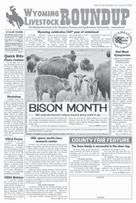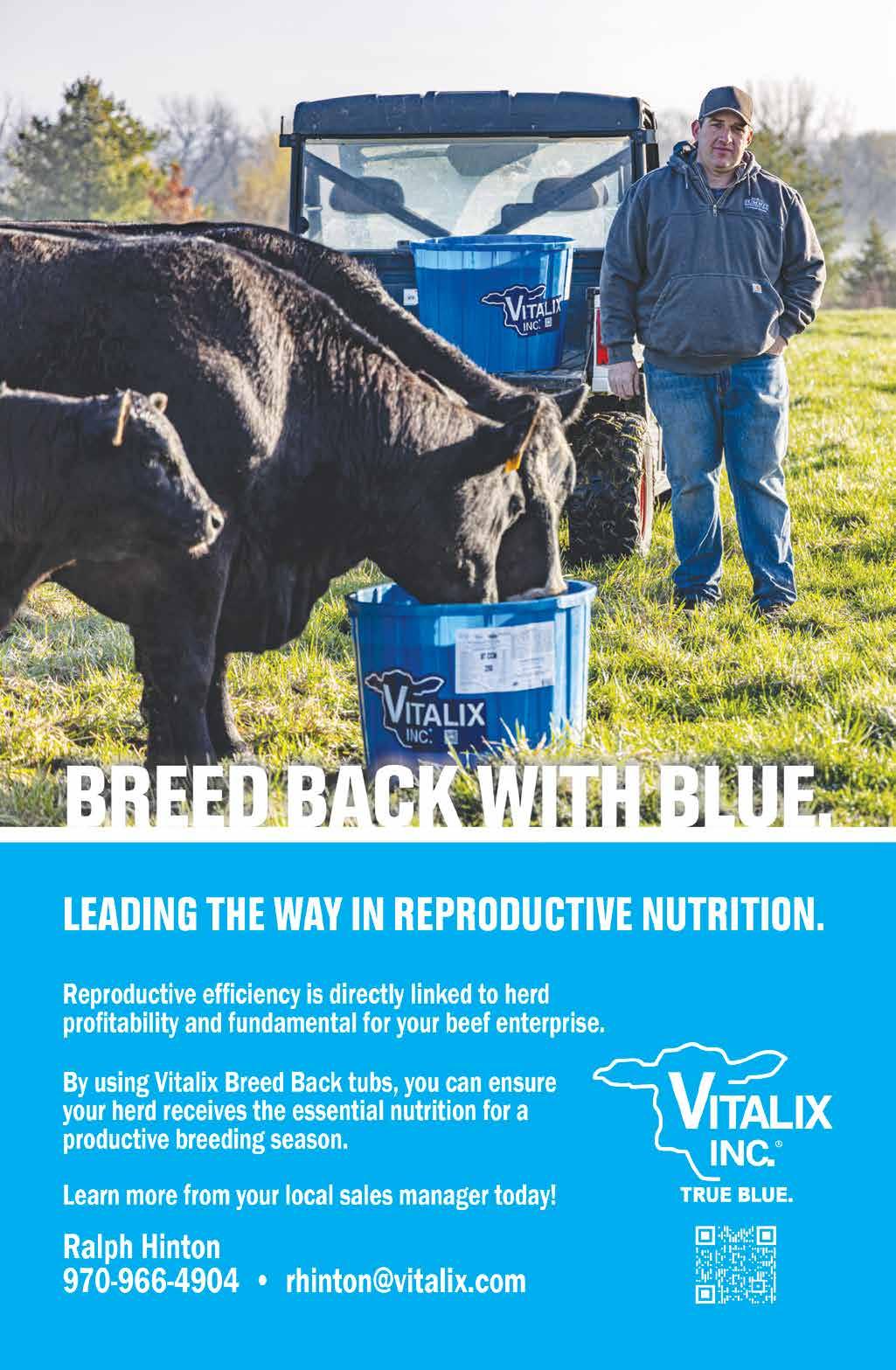MIDLAND BULL TEST 2025

APRIL 3
APRIL 4

Columbus , Montana


APRIL 3
APRIL 4

Columbus , Montana
When Midland Bull Test was founded in 1962 by Leo McDonnell, Sr. and a small group of purebred breeders, the concept of weighing and measuring cattle and publishing the resulting data was not met favorably by other breeders across the nation.
“However, under this constant pressure from the opponents of performance, Midland Bull Test, the Montana Beef Performance Association and several staunch seedstock producers continued to define, refine and promote performance as a primary tool in managing the profitability of the cow herd,” notes the Midland Bull Test website.
More than six decades later, this resilience and grit gave way to the largest feed efficiency testing program in North America, offering producers a one-of-akind opportunity to develop and market sound, functional, total-performance
bulls “that are ready to go to work.”
The test
Each year, Midland Bull Test evaluates about 1,100 purebred bulls from 200 consignors representing more than 32 states.
Bulls are entered in to a 112-day performance test in the fall, in which data is collected on average daily gain, weight per day of age, ultrasound, feed efficiency and breeding soundness. Then, the top 80 percent of bulls are sold in the Final Sort Sale.
“Over the last few decades, Midland has collected as much – if not more – ultrasound data than just about any other location in the country,” states the website, which goes on to explain ultrasound data is collected in accordance with guidelines developed by the Ultrasound Governance Committee, tasked with overseeing ultrasound matters of the U.S. Beef Breeds Council.
Ultrasound images are submitted to UltraInsights, a centralized ultrasound processing lab, and data is submitted for all bulls enrolled in their respective breed association’s performance program.
Additionally, Midland Bull Test gathers efficiency data using a GrowSafe System known as Vytelle, which measures the feed efficiency of each individual bull by tracking feed consumption through an electronic identification tag. This is then used to calculate residual feed intake –a correlation of the pounds of gain to pounds of intake – and, therefore, the increment cost of gain.
Bulls in the test are also required to pass a breeding soundness exam, which evaluates extension, motility, morphology, scrotal circumference and semen volume and concentration.
“Such a special bull comes out of Midland Bull
Test because of all of the selection pressure,” shares Leo McDonnell, Jr. in an “AngusTV” YouTube video celebrating Midland’s 50th anniversary. “There is nowhere else in the world where producers can find bulls through such a strict criteria process.”
The sale
This year, the Midland Bull Test Final Sort Sale will offer over 500 high-end bulls in Columbus, Mont. on April 3-4.
An impressive assortment of Gelbvieh, LimFlex, Salers, Simmental, South Devon and Red Angus bulls will sell on April 3 starting at 1 p.m., and Angus bulls will sell on April 4 at 11 a.m.
Prior to the test, Midland personnel will host a social gathering on April 2 from 3-7 p.m. to give buyers the opportunity to view bulls and enjoy complimentary hors d’oeuvres.
Following the multi-

There is a lot to consider when selecting bulls: performance, fertility, structure, feet, carcass, maternal influence, genetic potential and efficiency. THE PIECES MUST ALIGN TO PROPEL YOUR CATTLE INTO THE NEEDS OF TOMORROW.

At Midland, we gather the most individually measured pieces to provide results on more proven information than anyone in the business. For more than 50 years the most astute cattlemen across the nation have turned to MIDLAND BULL TEST as the place to assess and FIND THEIR NEXT VALUED BREEDING PIECE
Follow the progress of tomorrow’s stock online at Midland BullTest.com or email us at bulls@midlandbulltest.com to be added to the mailing list.

breed sale on April 3, producers can attend a complimentary steak dinner with live music at the new Civic Center in Columbus, Mont. Coffee and donuts will be served the morning of April 4, followed by a complimentary lunch during the Angus sale.
The website notes sale order will be determined by the Midland Bull Test Index and Estimated Sale Value, which will be posted online on sale day.
Each animal will be sold to the highest bidder, with the auctioneer settling any differences.
Cattle will sell according to health regulations of the state of Montana. A transferred certificate of registry will be furnished to the buyer for each animal after settlement has been made.
Bulls sold into states requiring trichomoniasis testing will be tested after the sale, and trucking arrangements will be made in short order.
Cattle will be delivered to central locations, such as stockyards, in the lower 48 states. More information on delivery is available in the Midland Bull Test Final Sort Sale catalog.
The sale will be broadcast live at cci.live. Buyers may bid online or use telephone bid lines at 406-3229911 or 406-322-9044. All buyers must register prior to the sale, and new buyers must provide bank references.
Joe and Greg Goggins will serve as auctioneers for the sale. Breed field representatives and livestock publication representatives will be available.
A sale catalog is available at midlandbulltest.com On sale day, more information will be available online or by calling 406-322-5597, 406-322-9911 or 406-3229044.
Hannah Bugas is the managing editor of the Wyoming Livestock Roundup. Send comments on this article to roundup@wylr.net.
Each year, Midland Bull Test publishes a list of the highest-achieving bulls for both average daily gain and weight per day of age by breed. The top five in each category for each breed is listed in the following pages of this edition.
Junior Consignors Page 3-4
Red Angus Page 5
Gelbvieh Page 6 Simmental Page 6 Lim-Flex Page 7 Salers Page 8-9
South Devon Page 9-10
Angus Page 11-15
Additionally, pages 16-18 of this edition include a variety of information on bull and cattle management topics related to breeding, feeding and more. Enjoy!
Cover photo by Chelsee Camblin
ADG – Average Daily Gain
BW – Actual Birth Weight: Expressed in pounds, is a predictor of a sire’s ability to transmit birth weight to his progeny compared to when he is bred to a first-calf heifer
EPD – Expected Progeny Difference: The prediction of how future progeny of each animal are expected to perform relative to the progeny of other animals listed in the database
M – Milk: A predictor of a sire’s genetic merit for milk and mothering ability as expressed in his daughters compared to daughters of other sires; in other words, it is a part of a calf’s weaning weight attributed to milk and mothering ability
Eff – Efficiency: Optimizes balance between performance and efficiency, measures how efficiently the caloric content of feed is converted to pounds
MBT – Midland Bull Test Index: Combined ADG, nursing ratio, yearling and efficiency ratios
RFI – Residual Feed Intake: Actual feed intake minus expected feed intake
WDA – Actual Weight Per Day of Age
WW – Weaning Weight EPD: Expressed in pounds, is a predictor of a sire’s ability to transmit weaning growth to his progeny compared to other sires
YW – Yearling Weight EPD: Expressed in pounds, is a predictor of a sire’s ability to transmit yearling growth to his progeny compared to other sires
Dear fellow cattlemen and women,
It is with great pleasure we invite you to the 63rd annual Midland Bull Test Final Sort Sale.
Here at Midland, we continue to strive for the commercial cattlemen by identifying bulls excelling in traits with the most economic importance. While the data may
Some cattlemen either cannot or will not recognize correct fundamentals in an unfitted bull. We have found the time-tested successful commercial breeders are among the shrewdest judges in selecting great breeding bulls. They can and will recognize correct fundamentals in a thin bull and are willing to pay good prices.
Why? Through years of successful operations, the cattleman has had lots of bull experience. He has bought fat bulls and watched those same bulls get thin. Sad and costly breeding experiences have been his best teacher. He has bought well-conditioned bulls and has been impressed with their development, livability and breeding performance.
Yes, the practical cattlemen are looking for and demanding the very funda-
appear complicated, it really boils down to sticking to the basics and checking off the boxes that cover the most bases.
You will find an excellent selection for performance, efficiency, carcass, feet, structure, length, capacity and disposition, as well as fertility and maternal. These basics, function and type get
mentals which have made the Angus breed the greatest beef in the world.
They are looking for and demanding red-meat, bully bulls, with a lot of natural thickness throughout the barrel, great depth of body and good legs with plenty of the right kind of bone.
We believe the cattleman is entitled to these fundamentals. He is willing to sacrifice on some other fundamentals if necessary. He is cautious and hard to fool on the fads and extremes which creep in and out of the breed.
We need this kind of cattleman and many more to fully develop the great potential of the expansion of Angus cattle.
Written by Clayton Jennings in 1964 and published in the Ankony Hyland catalog.
cattlemen through the thick and the thin that establishes longevity.
These days, with the market remaining strong and prosperous and the American cow herd size at the lowest it has been in decades, it is time to position your herd for the future.
We take pride in presenting producers with a quality selection
of breeding bulls they can buy with confidence to grow their herd in the right direction.
You would be hard pressed to find a similar set of exceptional, diverse genetics anywhere else. These bulls are walking the walk themselves by backing up their genetic potential and indexes with actual performance.
The bulls in our catalog represent “The Final Sort.”
Congratulations to our consignors and buyers and a heartfelt thank you for making this possible and for being a part of this crucial service to the world.
Sincerely, Steve and Amy Williams and the Midland Bull Test crew
Junior consignors are listed in both classes and are included among all of the breeds including Angus, Lim-Flex, Salers, Simmental and Red Angus.
The leaders in average daily gain (ADG), weight per day (WDA), Efficiency (Eff) and Midland Bull Test Index (MBT) are listed below.
Junior consignor bulls will sell on April 3-4 in lots 25 through 673.
Junior Consignor Bulls ADG
From the Angus division, lot 25, led the group with an ADG of 4.42. Consigned by Lily Mitchell from Spring Creeks Cattle Company of Boscobel, Wis. and sired by DB Iconic G95, this bull had a WDA of 3.28 and has EPDs of BW 1.3, WW 92, YW 159, M 25, RFI 3.46, Eff 104 and MBT 108.
Alec Gotto from Deppe Angus of Waverly, Iowa


consigned lot 255 in the fall Angus division. This bull was sired by Deer Valley Growth Fund and placed second with an ADG of 4.11. He had a WDA of 3.31 and has EPDs of BW 1.9, WW 83, YW 145, M 27, RFI -1.7, Eff 100 and MBT 110.
In third place, from the Angus division, was lot 426 with an ADG of 4. Sired by Crouch Congress from Deppe Angus and consigned by Brenden Gotto, this bull had a WDA of 3.51 and has EPDs of BW 0.3, WW 72, YW 124, M 17, RFI 3.06, Eff 111 and MBT 111.
Sired by Cole Gensis 86G, lot 629 from the LimFlex division secured fourth place in the Junior Consignor Bulls ADG category. Hailing from T4 Livestock LLC of Sterling, Colo. and consigned by Tad Thomas, this bull had a WDA of 3.08 and has EPDs of BW 2.1, WW 78, YW 125, M 37, RFI

-1.6, Eff 101 and MBT 108.
From the Angus division, consigned by Brenden Gotto, lot 427 had a WDA of 3.44 and has EPDs of BW 0.6, WW 67, YW 112, M 25, RFI 1.77, Eff 108 and MBT 108. He was sired by Crouch Congress from Deppe Angus.
Consigned by Deppe Angus, lot 426 had a WDA of 3.51 and secured first place in the Junior Consignor Bulls WDA category. Sired by Crouch Congress, this bull reported an ADG of 4 and has EPDs of BW 0.3, WW 72, YW 124, M 17, RFI 3.06, Eff 111 and MBT 111.
Landing in second place was lot 427, sired by Crouch Congress from Deppe Angus, with a WDA of 3.44. This bull had an ADG of 3.55 and has EPDs of BW 0.6, WW 67, YW 112, M 25, RFI 1.77, Eff




108 and MBT 108.
The third place Junior Consignor Bulls WDA winner was lot 255, consigned by Deppe Angus and sired by Deer Valley Growth Fund. This bull had a WDA of 3.31, an ADG of 4.11 and has EPDs of BW 1.9, WW 83, YW 145, M 27, RFI -1.7, Eff 100 and MBT 110.
From Spring Creeks Cattle and sired by DB Iconic G95, lot 25 had a WDA of 3.28 and took fourth place. This bull reported an ADG of 4.42 and has EPDs of BW 1.3, WW 92, YW 159, M 25, RFI 3.46, Eff 104 and MBT 108.
From the Salers division, lot 673 secured fifth place with a WDA of 3.30. Consigned by Jolee Mae Middlemist from Middlemist Cattle of Polson, Mont. and sired by Byergo Boomer 6351, this bull reported an ADG of 3.5 and has EPDs of BW 1.2,
Continued on next page

WW 74, YW 130, M 21, RFI 0, Eff 104 and MBT 106. Junior Consignor Bulls Eff Lot 426, consigned by Deppe Angus, secured first place in the Junior Consignor Bulls Eff category with an Eff of 111. Sired by Crouch Congress, this bull reported an ADG of 4, WDA of 3.51 and has EPDs of BW 0.3,
WW 72, YW 124, M 17, RFI 3.06 and MBT 111. Pulling into a secondplace finish from the Red Angus division, with an Eff of 109, was lot 555. This bull was sired by Badlands Opportunity 53Y from Red Rock Red Angus of Wessington Springs, S.D. and was consigned by Connor Kar-


sky. He reported an ADG of 2.45, a WDA of 2.98 and has EPDs of BW -0.1, WW 79, YW 119, M 21, RFI -1.3 and MBT 100.
Sired by Crouch Congress and consigned by Deppe Angus, lot 427 finished in third place with an Eff of 108. This bull reported an ADG of 3.55, a WDA 3.44 and has EPDs of BW 0.6, WW 67, YW 112, M 25, RFI
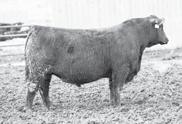
1.77 and MBT 108. Rounding out the top five in the Junior Consignor Bull Eff category were lots 25 and 673, with an Eff of 104.
Consigned by Springs Creeks Cattle Company, lot 25 reported an ADG of 4.42, a WDA of 3.28 and EPDs of BW 1.3, WW 92, YW 159, M 25, RFI 3.46 and MBT 108.
Sired by Byergo Boomer 6351 and consigned by Middlemist Cattle, lot 673 reported an ADG of 3.5, a WDA of 3.3 and EPDs of BW 1.2, WW 74, YW 130, M 21, RFI 0 and MBT 106.
Junior Consignor ulls MBT Index
Consigned by Deppe Angus, lot 426 secured first place in the Junior Consignor Bulls MBT category with a MBT of 111. Sired by Crouch Congress, this bull reported an ADG of 4, a WDA of 3.51 and EPDs of BW 0.3, WW 72, YW 124, M 17, RFI 3.06 and Eff 111.
The second place Junior Consignor Bulls MBT winner was lot 255, consigned by Deppe Angus, with a MBT of 110. Sired by Deer Valley Growth Fund, this bull reported an ADG of 4.11, a WDA of 3.31 and EPDs of BW 1.9, WW 83, YW 145, M 27, RFI -1.7 and Eff 100.
In a three-way tie for third place were lots 25, 427 and 629.
Lot 25, consigned by Springs Creeks Cattle Company, posted a MBT of 108. This bull was sired by DB
Iconic G95 and reported an ADG of 4.42, a WDA of 3.28 and EPDs of BW 1.3, WW 92, YW 159, M 25, RFI 3.46 and Eff 104.
Sired by Crouch Congress and consigned by Deppe Angus, lot 427 shared the leaderboard with a MBT of 108. This bull reported an ADG of 3.55, a WDA 3.44 and EPDs of BW 0.6, WW 67, YW 112, M 25, RFI 1.77 and Eff 108.
With a MBT of 108, lot 629, sired by Cole Gensis 86G, shared the leaderboard in the Junior Consignor Bulls MBT category. This bull, consigned by T4 Livestock LLC, had an ADG of 3.73, a WDA of 3.08 and has EPDs of BW 2.1, WW 78, YW 125, M 37, RFI -1.6 and Eff 101.
Midland Bull Test Awards Sale bulls in each
breed qualify for Midland Bull Test Performance Awards, based on performance, semen evaluation and soundness. Breeds with less than 30 head and all fall bulls qualify for honors as the MBT High Indexing Bull and High Efficiency Bull.
As of March 9, pending semen results and registration documents, the Champion Junior Consignor Bull was lot 426 with a MBT of 111, and the Reserve Junior Consignor Bull was lot 255 with a MBT of 110, both bulls were consigned by Deppe Angus.
This set of bulls will sell at the Midland Bull Test Final Sort Sale on April 3-4 in Columbus, Mont. To view test results in their entirety, visit midlandbulltest.com
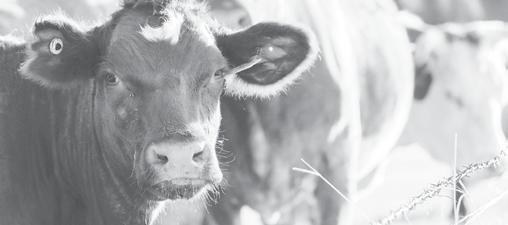





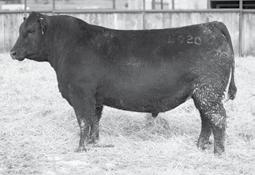


Consignors from across the country gathered for the annual Midland Bull Test where they showcased impressive Red Angus bulls. Collectively, the Red Angus bulls had an average daily gain (ADG) of 2.71 and a weight per day of age (WDA) of 2.70.
Leaders in ADG, WDA, Efficiency (Eff) and Midland Bull Test (MBT) Index are listed below.
The Red Angus bulls will sell on April 3 in lots 552 through 570.
Group 2 Red Angus Spring Bulls ADG
The first-place position in the Red Angus Spring Bulls ADG category was secured by 34 Farms of Medicine Lake, Mont. with lot 565.
Lot 565 had an ADG of 3.32 and was sired by Brown Premier X7876. This bull had a WDA of 2.96 and has EPDs of BW -0.5, WW 77, YW 130, M 23, RFI 2.66, Eff 98 and MBT 108.
With an ADG of 3.23, consigned by JVM Cattle Company of Pella, Iowa, lot 558 secured second place. Sired by Nio Prestige 0130, this bull had a WDA of 3.29 and has EPDs of BW 0.1, WW 75, YW 122, M 27, RFI 0.91, Eff 94 and MBT 109.
Consigned by Dahlman Diamond D Ranch of Dutton, Mont., lot 569 took home third place with an ADG of 3.14. This bull reported a WDA of 2.74, M 25, RFI 1.69, Eff 97 and MBT 104. This bull has a non-registered sire and no reported data for BW, WW or YW.
With an ADG of 3.05,
lot 564 secured fourth place. Sired by HXC Charter 6610D from 34 Farms, this bull had a WDA of 2.85 and has EPDs of BW -0.5, WW 74, YW 123, M 30, RFI 2.46, Eff 100 and MBT 104.
Rounding out the top five was lot 553 with an ADG of 2.95, consigned by Wild To Mild Red Angus of Wessington Springs, S.D. Sired by 4MC Strong Side 0403, this bull had a WDA of 2.49 and has EPDs of BW -1.9, WW 67, YW 98, M 23, RFI 2.11, Eff 97 and MBT 101.
Group 2 Red Angus Spring Bulls WDA
The Group 2 Red Angus Spring Bulls WDA leader was lot 558, consigned by JVM Cattle Company, with a WDA of 3.29. Sired by Nio Prestige 0130, this bull reported an ADG of 3.23 and EPDs of BW 0.1, WW 75, YW 122, M 27, RFI 0.91, Eff 94 and MBT 109.
Securing second place was lot 555 from Red Rock Red Angus of Wessington Springs, S.D. with a WDA of 2.98. Sired by Badlands Opportunity 53Y, this bull reported an ADG of 2.45 and EPDs of BW -0.2, WW 79, YW 119, M 21, RFI -1.28, Eff 100 and MBT 100.
In third place, consigned by 34 farms, lot 565 had a WDA of 2.96 and was sired by Brown Premier X7876 with an ADG of 3.32 and EPDs of BW -0.5, WW 77, YW 130, M 23, RFI 2.66, Eff 98 and MBT 108 Landing in a two-way tie for fourth were lots 561 and 568 with a WDA of 2.87.
Consigned by 34 Farms and sired by HXC Charter
6610D, lot 561 reported an ADG of 2.68 and EPDs of BW -1.0, WW 70, YW 116, M 30, RFI -0.07, Eff 104 and MBT 102.
Lot 568 from 34 Farms was sired by 5L Bourne 11748A and reported an ADG of 2.64 and EPDs of BW -2.7, WW 68, YW 111, M 29, RFI 2.75, Eff 93 and MBT 99.
Group 2 Red Angus Spring Bulls Eff
Consigned by Wild To Mild Red Angus, lot 557 secured the top spot in the Group 2 Red Angus Spring Bulls Eff category with an Eff of 109.
The son of Badlands Opportunity 53Y, this bull reported an ADG of 2.82, a WDA of 2.76 and EPDs of BW -2, WW 80, YW 125, M 24, RFI -2.38 and MBT 103.
Pulling in to second place, with an Eff of 106, was lot 566. Sired by King Defender and consigned by 34 Farms, this bull had an ADG of 2.55 and a WDA 2.82. This bull has EPDs of BW -5.5, WW 68, YW 118, M 26, RFI -0.92 and MBT 100.
Sired by HXC Charter 6610D and consigned by 34 Farms, lot 561 finished in a two-way tie for third with an Eff of 104.
Lot 561 reported an ADG of 2.68 and a WDA of 2.87, with EPDs of BW -1, WW 70, YW 116, M 30, RFI -0.07 and MBT 102.
Sharing the third-place win was lot 570, consigned by Dahlman Diamond D Ranch, with an Eff of 104. This bull reported an ADG of 2.64, a WDA of 2.69 and EPDs of BW 0, WW 73, YW 113, M 29, RFI 1.16 and

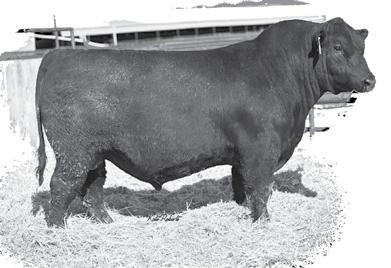
MBT 100. No sire information was reported.
Concluding the leaderboard in fifth place was lot 552, consigned by Wild To Mild Red Angus. Sired by Red Diamond Wicked 026, this bull reported an Eff of 102, an ADG of 2.64, a WDA of 2.24 and EPDs of BW -0.4, WW 64, YW 100, M 29, RFI -0.76 and MBT 97. Group 2 Red Angus Spring Bulls MBT Index
Securing the first-place finish in the Red Angus Spring Bulls MBT Index category with a MBT of 109 was lot 558.
Consigned by JVM Cattle Company and sired by Nio Prestige 0130, lot 558 reported an ADG of 3.23 and a WDA of 3.29, with EPDs of BW 0.1, WW 75, YW 122, M 27, RFI 0.91 and Eff 94.
Sired by Brown Premier X7876, lot 565, consigned by 34 Farms, secured second place with a MBT of 108. Lot 565 reported an ADG of 3.32 and a WDA of 2.96, with EPDs of BW -0.5, WW 77, YW 130, M 23, RFI 2.66 and Eff 98.
Sharing the third-place title were lots 564 and 569 with a MBT of 104.
Lot 564, consigned by 34 Farms, sired by HXC Charter 6610D, reported an ADG of 3.05 and a WDA of 2.85, with EPDs of BW -0.5, WW 74, YW 123, M 30, RFI 2.46 and Eff 100.
From Dahlman Diamond
D Ranch, lot 569 reported an ADG of 3.14, a WDA of 2.74, M 25, RFI 1.69 and Eff 97. This bull has a non-registered sire and no reported data for BW, WW or YW.
Rounding out the top five bulls in the MBT Index category with a MBT of 103 was lot 557, consigned by Wild To Mild Red Angus.
The son of Badlands Opportunity 53Y, this bull reported an ADG of 2.82, a WDA of 2.76 and EPDs of BW -2, WW 80, YW 125, M 24, RFI -2.38 and Eff 109.
Midland Bull Test Awards
Sale bulls in each breed qualify for Midland Bull Test Performance Awards, based on performance, semen evaluation and soundness. Breeds with less than 30 head and all fall bulls qualify for hon-
ors as the MBT High Indexing Bull and High Efficiency Bull.
As of March 9, pending semen results and registration documents, the High Indexing Red Angus Bull Award went to lot 558 with a MBT of 109. The Reserve Indexing Red Angus Bull was lot 565 with a MBT of 108.
With an Eff of 109, lot 557 received the High Efficiency Red Angus Bull Award, and lot 566, with an Eff of 106, was the Reserve Efficiency Red Angus Bull.
This set of Red Angus bulls will sell at the Midland Bull Test Final Sort Sale on April 3 in Columbus, Mont. To view test results in their entirety, visit midlandbulltest.com


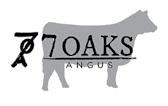




Gerlach Cattle Company of Winslow, Ill. consigned the only Simmental bull at this year’s Midland Bull Test, which will sell on April 3 during the 2025 Midland Bull Test Final Sort Sale.
Group 2 Simmental Bull ADG, WDA, Eff, MBT Index
Lot 601 was sired by THSF Lover Boy B33 and had an average daily gain (ADG) of 3.32, as well as a weight per day of age (WDA) of 2.93.
This bull also had an Efficiency (Eff) of 102 and a Midland Bull Test (MBT) Index of 103, as well as EPDs of BW 1.5,
Group 2 Simmental Spring Bull 1 – Lot 601 – 3.32 ADG, 2.93 WDA, 102 Eff, 103 MBT Index
WW 80, YW 119, M 24 and RFI -0.20.
Midland Bull Test Awards Sale bulls in each breed qualify for Midland Bull Test Performance Awards based on performance, semen evaluation and soundness. Breeds with less than 30 head and all fall bulls qualify for honors as the MBT High Indexing Bull and High Efficiency Bull.
As of March 9, pending semen results and registration documents, lot 601 was the High Indexing Simmental Bull with a MBT of 103 and the High Efficiency Simmental Bull with an Eff of 102.
This set of Simmental bulls will sell at the Midland Bull Test Final Sort Sale on April 3 in Columbus, Mont. To view the test results in their entirety, visit midlandbulltest.com
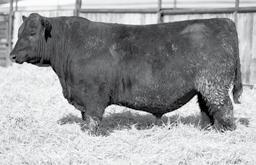

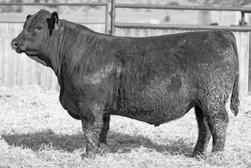
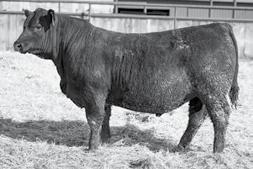
Three Gelbvieh bulls consigned by Rock Solid Gelbvieh of Blackfoot, Idaho made an impressive showing during this year’s Midland Bull Test.
The trio reported a collective average daily gain (ADG) of 3.26 and weight per day of age (WDA) of 3.27. Leaders in ADG, WDA, Efficiency (Eff) and Midland Bull Test (MBT) Index are listed below.
These Gelbvieh bulls will sell on April 3 in lots 675 through 678.
Group 2 Gelbvieh Spring Bulls ADG Lot 675 topped the leaderboard several times during the 2025 Midland Bull Test, starting off strong with the winning ADG of 3.55. Sired by Coleman Resource 710, this bull reported a WDA of 3.50 and EPDs of BW 0.6, WW 76, YW 126, M 18, RFI 0.04, Eff 103 and MBT 107.
The second-place ADG bull – lot 678 – is also a son of Coleman Resource 710. He reported an ADG of 3.41, a WDA of 3.11 and EPDs of BW 2.6, WW 83, YW 140, M 19, RFI 2.42, Eff 104 and MBT 98.
Rounding out the top three Group 2 Gelbvieh Spring Bulls ADG category was lot 677 with an ADG of 3.36. This bull was sired by JRI Relentless 170H281 and posted a WDA of 3.42, as well as EPDs of BW -0.2, WW 83, YW 132, M 21, RFI 0.27, Eff 98 and MBT 103.
Group 2 Gelbvieh Spring Bulls WDA Lot 675 had another first-place finish in the Group 2 Gelbvieh Spring
Bulls WDA category, reporting a WDA of 3.50. A son of Coleman Resource, this bull had an ADG of 3.55 and has EPDs of BW 0.6, WW 76, YW 126, M 18, RFI 0.04, Eff 103 and MBT 107.
A WDA of 3.42 placed lot 677, a son of JRI Relentless 170H281, second in the category. This bull had an ADG of 3.36 and has EPDs of BW -0.2, WW 83, YW 132, M 21, RFI 0.27, Eff 98 and MBT 103.
The third-place WDA bull was lot 678, a son of Coleman Resource 710, with a WDA of 3.11. This bull had an ADG of 3.41 and has EPDs of BW 2.6, WW 83, YW 140, M 19, RFI 2.42, Eff 104 and MBT 98.
Group 2 Gelbvieh Spring Bulls Eff Lot 678 climbed to the top spot in the Group 2 Gelbvieh Spring Bulls Eff category, posting an Eff of 104. With an ADG of 3.41 and a WDA of 3.11, this son of Coleman Resource 710 has EPDs of BW 2.6, WW 83, YW 140, M 19, RFI 2.42 and MBT 98.
Lot 675, another son of Coleman Resource 710,
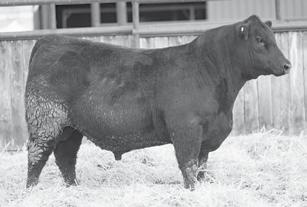

had the second-place Eff in the category. He posted an Eff of 103, an ADG of 3.55, a WDA of 3.50 and EPDs of BW 0.6, WW 76, YW 126, M 18, RFI 0.04 and MBT 107.
Lot 677 was third in the Group 2 Gelbvieh Spring Bulls Eff category with an Eff of 98. Sired by JRI Relentless 170H281, this bull had an ADG of 3.36, a WDA of 3.42 and has EPDs of BW -0.2, WW 83, YW 132, M 21, RFI 0.27 and MBT 103.
Group 2 Gelbvieh Spring Bulls MBT Index
For the third time, lot 675 topped the leaderboard with an MBT of 107. This son of Coleman Resource 710 had an ADG of 3.55, a WDA of 3.50 and has EPDs of BW 0.6, WW 76, YW 126, M 18, RFI 0.04 and Eff 103.
Lot 677’s MBT of 103 was the second highest across the Group 2 Gelbvieh spring bulls. This bull was sired by JRI Relentless 170H281 and posted an ADG of 3.36, a WDA of 3.42 and EPDs of BW -0.2, WW 83, YW 132, M 21, RFI 0.27 and Eff 98. In third, with an MBT of 98, was lot 678. A son of Coleman Resource 710, this bull had an ADG of 3.41 and a WDA of 3.11, as well as EPDs of BW 2.6, WW 83, YW 140, M 19, RFI 2.42, Eff 104 and MBT 98.
Midland Bull Test Awards
Sale bulls in each breed qualify for Midland Bull Test Performance Awards based on performance, semen evaluation and soundness. Breeds with less than 30 head and all fall bulls qualify for honors as the MBT High Indexing Bull and High Efficiency Bull.
As of March 9, pending semen results and registration documents, the Champion High Indexing Bull was lot 675 with a MBT of 107, and the Reserve Champion High Indexing Bull was lot 677 with a MBT of 109. The Champion High Efficiency Bull was lot 678 with an Eff of 104, and the Reserve Champion High Efficiency Bull was lot 675 with an Eff of 103.
This set of Gelbvieh bulls will sell at the Midland Bull Test Final Sort Sale on April 3 in Columbus, Mont. To view the test results in their
T4 Livestock LLC of Sterling, Colo. consigned all five of the Lim-Flex bulls offered at this year’s Midland Bull Test, reporting a collective average daily gain (ADG) of 3.42 and weight per day of age (WDA) of 3.15.
Leaders in ADG, WDA, Efficiency (Eff) and Midland Bull Test (MBT) Index are listed below.
Lim-Flex bulls will sell on April 3 in lots 625 through 629.
Group 2 Lim-Flex
Spring Bulls ADG
Lot 627 dominated all four categories for the Group 2 Lim-Flex spring bulls, starting strong with a leading ADG of 3.77. A son of TMCK Santana 828J, this bull had a WDA of 3.44 and has EPDs of BW 1, WW 89, YW 147, M 28, RFI -3.27, Eff 116 and MBT 112.
The second-highest ADG in the group was posted by lot 629, with an ADG of 3.73. This bull was sired by Cole Genesis 86G and reported a WDA of 3.08 and EPDs of BW 2.1, WW 78, YW 125, M 37, RFI -1.64, Eff 115 and MBT 108.
The third place ADG spring Lim-Flex bull was lot 625, a son of CJSL Dauntless 6257D ET. This bull had an ADG of 3.41, a WDA of 2.90 and has EPDs of BW 3.4, WW 96, YW 156, M 24, RFI 4.04, Eff 96 and MBT 102.
In fourth was lot 628 with an ADG of 3.32. This bull was sired by Wulfs Joint Venture G579J, with a WDA of 3.37 and EPDs of BW 1.5, WW 80, YW 127, M 32, RFI 0.16, Eff 112 and MBT 107.
Rounding out the top five in the category was lot 626 with an ADG of 2.86. This bull had a WDA of 2.95 and has EPDs of BW 1.5, WW 90, YW 146, M 25, RFI 0.71, Eff 98 and MBT 96. He was sired by Cell History Buff 0245H ET.
Group 2 Lim-Flex Spring Bulls WDA Lot 627 had another first-place finish with the top WDA in the Group 2 Lim-Flex Spring Bulls. Sired by TMCK Santana 828J, this bull posted a WDA of 3.44 and an ADG of 3.77. He has EPDs of BW 1, WW 89, YW 147, M 28, RFI -3.27, Eff 116 and MBT 112. Lot 628 followed in second with a WDA of 3.37. This bull was sired by Wulfs Joint Venture G579J and had an ADG of 3.32, as well as EPDs of BW 1.5, WW 80, YW 127, M 32, RFI 0.16, Eff 112 and MBT 107. The third-highest WDA in the group was reported by lot 629, with a WDA of 3.08. This bull had an ADG of 3.73 and has EPDs of BW 2.1, WW 78, YW 125, M 37, RFI -1.64, Eff 115 and MBT 108. He was sired by Cole Genesis 86G. Fourth in the category was lot 626 with a WDA of 2.95. A son of Cell History
Buff 0245H ET, this bull had an ADG of 2.86 and has EPDs of BW 1.5, WW 90, YW 146, M 25, RFI 0.71, Eff 98 and MBT 96. Lot 625 finished fifth in the category with a WDA of 2.90. This bull was sired by CJSL Dauntless 6257D ET, with an ADG of 3.41 and EPDs of BW 3.4, WW 96, YW 156, M 24, RFI 4.04, Eff 96 and MBT 102. Group 2 Lim-Flex Spring Bulls Eff With another first-place category finish, lot 627 topped the Group 2 LimFlex spring bulls with an Eff of 116. This bull reported an ADG of 3.77, a WDA of 3.44 and EPDs of BW 1, WW 89, YW 147, M 28, RFI -3.27 and MBT 112. He was sired by TMCK Santana 828J.
Lot 629 posted an Eff of 115 to finish second in the group. With an ADG of 3.73 and a WDA of 3.08, this bull was sired by Cole Genesis 86G and has EPDs of BW 2.1, WW 78, YW 125, M 37, RFI -1.64 and MBT 108. Next was lot 628 with an Eff of 112. Sired by Wulfs Joint Venture G579J, this bull posted EPDs of BW 1.5, WW 80, YW 127, M 32, RFI 0.16, Eff 112 and MBT 107, as well as an ADG of 3.32 and a WDA of 3.37.
The son of Cell History Buff 0245H ET, lot 626 had another fourth-place finish with an Eff of 98. He also had an ADG of 2.86 and a WDA of 2.95, as well as EPDs of BW 1.5, WW 90, YW 146, M 25, RFI 0.71 and MBT 96.
Closing out the leaderboard in this category was lot 625 with an Eff of 96. With an ADG of 3.41 and a WDA of 2.90, this son of CJSL Dauntless 6257D ET has EPDs of BW 3.4, WW 96, YW 156, M 24, RFI 4.04 and MBT 102.
Group 2 Lim-Flex Spring Bulls MBT Index
Again, lot 627 topped the podium in the MBT Index category, posting an MBT of 112. The son of TMCK Santana 828J had an ADG of 3.77, a WDA of 3.44 and EPDs of BW 1, WW 89, YW 147, M 28, RFI -3.27 and Eff 116.
Next was lot 629 with a MBT of 108. This bull was sired by Cole Genesis 86 G and posted an ADG of 3.73, a WDA of 3.08 and EPDs of BW 2.1, WW 78, YW 125, M 37, RFI -1.64 and Eff 115.
A MBT of 107 put lot 628 in the third-place position. Sired by Wulfs Joint Venture G579J, he had an ADG of 3.32 and a WDA of 3.37, as well as EPDs of

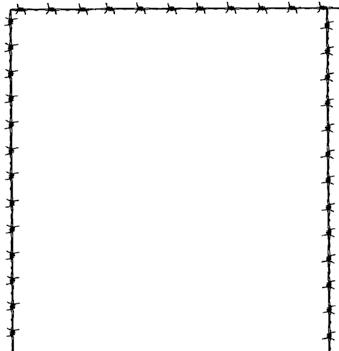

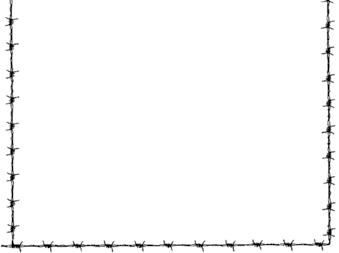
BW 1.5, WW 80, YW 127, M 32, RFI 0.16 and Eff 112.
Lot 625 finished fourth in the category with a MBT of 102. He had an ADG of 3.41, a WDA of 2.90 and has EPDs of BW 3.4, WW 96, YW 156, M 24, RFI 4.04 and Eff 96. This bull was sired by CJSL Dauntless 6257D ET.
The fifth-place bull was lot 626 with a MBT of 96. A son of Cell History Buff 0245H ET, this bull had an ADG of 2.86, a WDA of 2.95 and has EPDs of BW 1.5, WW 90, YW 146, M 25, RFI 0.71, Eff 98 and MBT 96.
Midland Bull Test Awards Sale bulls in each breed qualify for Midland Bull Test Performance Awards based on performance, semen evaluation and soundness. Breeds with less than 30 head and all fall bulls qualify for honors as the MBT High Indexing Bull and High Efficiency Bull.
As of March 9, pending semen results and registration documents, both the High Indexing and High Efficiency Lim-Flex Bull awards went to lot 627 with a MBT of 112 and an Eff of 116.
With a MBT of 108 and an Eff of 115, lot 629 was
the High Indexing and High Efficiency Lim-Flex Bull Runner-Up.
This set of Lim-Flex bulls will sell at the Midland Bull Test Final Sort Sale on April 3 in Columbus, Mont. To view the test results in their entirety, visit midlandbulltest.com
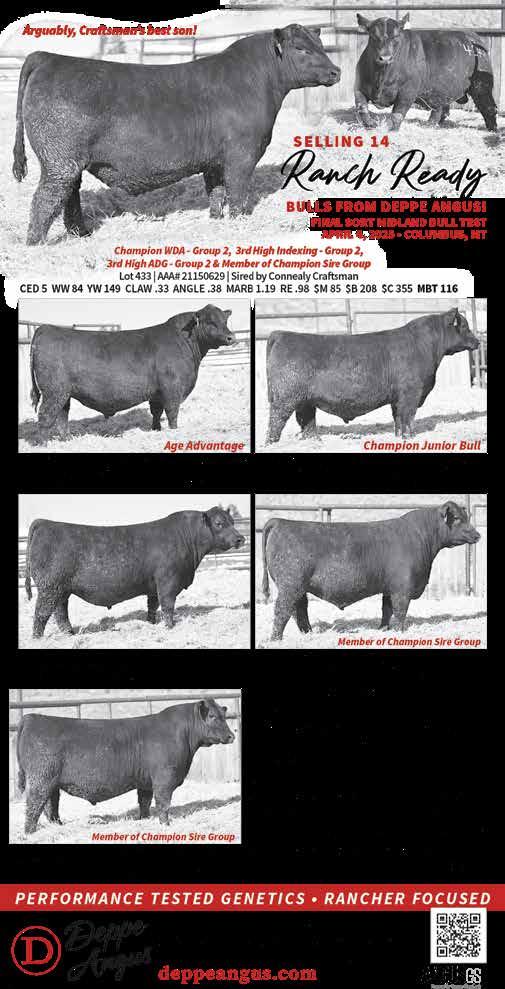
5/6
Taking home wins in each category, Elm Creek Ranch of Hebron, N.D. celebrated success in the Group 2 Salers Spring Bulls at the 2025 Midland Bull Test and Sale.
Additional Salers consignors included Effertz Key Ranch of Granville, N.D.; McCoy Livestock of Buhl, Idaho and Middlemist Cattle of Polson, Mont.
The Group 2 Salers Spring Bulls had a collective average daily gain (ADG) of 3.06 and a weight per day of age (WDA) of 3.22.
The leaders in ADG, WDA, Efficiency (Eff) and Midland Bull Test (MBT)


Index are listed below.
The Salers bulls will sell on April 3 in lots 652 through 673.
Group 2 Salers Spring Bulls ADG Lot 664 from Elm Creek Ranch led the pack with an ADG of 3.95. Sired by Tehama Patriarch F028, this bull had a WDA of 3.42 and has EPDs of BW -0.7, WW 73, YW 125, M 23, RFI 2.12, Eff 102 and MBT 110.
Effertz Key Ranch’s lot 670, sired by Keys Rockstar 115K, placed second with an ADG of 3.77. This bull had a WDA of 3.47 and has EPDs of BW 3.1, WW 86, YW 129, M 10, RFI 1.43,



Eff 100 and MBT 109.
In third place is another son of Tehama Patriarch F028 from Elm Creek Ranch, lot 665. This bull reported an ADG of 3.68, a WDA of 3.43 and EPDs of BW -1.3, WW 75, YW 134, M 28, RFI 2.95, Eff 89 and MBT 104.
Completing the leaderboard in the Salers Spring Bulls ADG category were lots 660 and 673 with an ADG of 3.50.
Sired by PCSL Kickoff, lot 660 from Elm Creek Ranch had a WDA of 3.46 and has EPDs of BW 3.4, WW 79, YW 113, M 18, RFI -2.60, Eff 102 and MBT 110.
Lot 673, sired by Byergo Boomer 635 and consigned by Middlemist Cattle, had a WDA of 3.30 and has EPDs of BW 1.2, WW 74, YW 130, M 21, RFI 0, Eff 107 and MBT 106.
Group 2 Salers
Spring Bulls WDA
Elm Creek Ranch’s lot 657 had a WDA of 3.51, securing first place in the WDA category. Sired by TSB Jumbo 53J, this bull reported an ADG of 3.36 and EPDs of BW -0.1, WW 82, YW 128, M 21, RFI -0.48, Eff 102 and MBT 109.
Consigned by Effertz Key Ranch and sired by Keys Rockstar 115K, lot 670 secured second place with a WDA of 3.47. This bull reported an ADG of 3.77 and EPDs of BW 3.1, WW 86, YW 129, M 10, RFI 1.43, Eff 100 and MBT 109.
The third place WDA winner was lot 660, consigned by Elm Creek Ranch. Sired by PCSL Kickoff, this bull had a WDA of 3.46, an ADG of 3.50 and has EPDs of BW 3.4, WW 79, YW 113, M 18, RFI -2.60, Eff 102 and MBT 110.
Also consigned by Elm

Creek Ranch, lot 665, a son of Tehama Patriarch F028, had a WDA of 3.43 to claim fourth place. This bull reported an ADG of 3.68 and EPDs of BW -1.3, WW 75, YW 134, M 28, RFI 2.95, Eff 89 and MBT 104.
Two bulls from Elm Creek Ranch, lots 655 and 664, tied for fifth place with a WDA of 3.42.
Sired by TSB Jumbo 53J, lot 655 reported an ADG of 3.41 and EPDs of BW 2.2, WW 86, YW 132, M 17, RFI 2.02, Eff 103 and MBT 108.
Lot 664, sired by Tehama Patriarch F028, had an ADG of 3.95 and has EPDs of BW -0.7, WW 73, YW 125, M 23, RFI 2.12, Eff 102 and MBT 110.
Group 2 Salers
Spring Bulls Eff
The son of Keys Rockstar 115K, lot 671, consigned by Effertz Key Ranch, secured the top spot in the Group 2 Spring Bulls Eff category with an Eff of 120. He had an ADG of 3, a WDA of 3.27 and has EPDs of BW 2.4, WW 72, YW 116, M 12, RFI -2.61 and MBT 106.
Pulling into a secondplace finish with an Eff of 107 was lot 673, sired by Byergo Boomer 6351 from Middlemist Cattle. This bull reported an ADG of 3.50 and a WDA of 3.30, with EPDs of BW 1.2, WW 74, YW 130, M 21, RFI 0 and MBT 106.
Consigned by Elm Creek Ranch and sired by TSB Magic 149H, lot 658 finished in third place with an Eff of 104. This bull reported an ADG of 3.23, a WDA 3.26 and EPDs of BW 2.7 WW 76, YW 115, M 15, RFI -3.22 and MBT 103. In fourth place lot 655, consigned by Elm Creek Ranch, with an Eff of 103. Another son of TSB Jumbo 53J, this bull had an ADG of 3.41, a WDA of 3.42 and has EPDs of BW 2.2, WW 86, YW 132, M 17, RFI 2.02 and MBT 108.
Rounding out the top five bulls were lots 657, 660 and 664, all consigned by Elm Creek Ranch, with an Eff of 102.
Lot 657, sired by TSB Jumbo 53J reported an ADG of 3.36, a WDA of 3.51 and EPDs of BW -0.1, WW 82, YW 128, M 21, RFI -0.48 and MBT 109.
Lot 660, sired by PCSL Kickoff, reported an ADG of 3.50, a WDA of 3.46 and EPDs of BW 3.4, WW 79, YW 113, M 18, RFI -2.60 and MBT 110.
Lot 664, sired by Tehama Patriarch F028, reported an ADG of 3.95, a WDA of 3.42 and EPDs of BW -0.7, WW 73, YW 125, M 23, RFI 2.12 and MBT 110.

Group 2 Salers Spring Bulls MBT Index Lots 660 and 664 from Elm Creek Ranch shared first place in the Salers Spring Bulls MBT Index category with a MBT of 110.
Lot 660, sired by PCSL
DLCC Ranch of Pierz, Minn. dominated the South Devon bulls during the 2025 Midland Bull Test.
The fall-born bulls had a collective average daily gain (ADG) of 3.37 and an average weight per day of age (WDA) of 2.82.
The South Devon spring-born bulls collectively reported an average ADG of 2.34 and WDA of 2.99.
Leaders of both groups in ADG, WDA, Efficiency (Eff) and Midland Bull Test (MBT) Index are listed below.
The South Devon bulls will sell April 3 as lots 700 through 714.
Group 2 South Devon Fall Bulls ADG
Lot 707 was the leader of the Group 2 South Devon Fall Bulls ADG category with an ADG of 3.88, consigned by DLCC Ranch. Sired by DLCC Gold Dust 64G, this bull had a WDA of 3.11 and has EPDs of BW 0.7, WW 72, YW 111, M 19, RFI -0.92, Eff 111 and MBT 110.
Consigned by DLCC Ranch, in second place was lot 703. Sired by DLCC Montana Fate 5J, with an ADG of 3.75 and a WDA of 2.96, this bull has EPDs of BW 1.2, WW 73, YW 115, M 12, RFI -1.01, Eff 106 and MBT 105.
Consigned by Thompson Land and Cattle of Motley, Minn., lot 700 landed in
third with an ADG of 3.62.
Sired by TLC General Patton, this bull had a WDA of 2.83 and has EPDs of BW 0.5, WW 55, YW 84, M 20, RFI 0.53, Eff 102 and MBT 103. Lot 704, another son of DLCC Gold Dust 64G, landed in fourth with an ADG of 3.53. Consigned by DLCC Ranch, this bull had a WDA of 2.75 and has EPDs of BW 2.5, WW 79, YW 120, M 15, RFI 0.24, Eff 104 and MBT 103.
Rounding out the top five fall-born South Devon bulls was lot 706, sired by DLCC Montana Fate 5J, with an ADG of 3.26. He had a WDA of 2.87 and has EPDs of BW 0.8, WW 67, YW 101, M 13, RFI 3.15, Eff 99 and MBT 100. He was consigned by DLCC Ranch.
Group 2 South Devon Spring Bulls ADG
The top-ranking Group 2 South Devon Spring Bulls ADG bull was lot 708, consigned by JVM Cattle Company of Pella, Iowa, with an ADG of 2.88. A son of WGF Hondo, he had a WDA of 3.48 and has EPDs of BW 2.2, WW 62, YW 96, M 25, RFI 1.54, Eff 97 and MBT 110.
Pulling into the secondplace position with an ADG of 2.45 was lot 714, consigned by C/N Ranch of Big Timber, Mont. and sired by DLCC Grandeur 42G. This bull had a WDA of 3.14
Continued from previous page
Kickoff, reported an ADG of 3.50, a WDA of 3.46 and EPDs of BW 3.4, WW 79, YW 113, M 18, RFI -2.60 and Eff 102.
Lot 664, with an ADG of 3.95 and a WDA of 3.42, was sired by Tehama Patriarch F028. This bull has EPDs of BW -0.7, WW 73, YW 125, M 23, RFI 2.12 and Eff 102.
With a MBT of 109, lots 657 and 670 tied for third place.
Consigned by Elm Creek Ranch, lot 657, sired by TSB Jumbo 53J, reported an ADG of 3.36 and a WDA of 3.51, with EPDs of BW -0.1, WW 82, YW 128, M 21, RFI -0.48 and Eff 102.
Consigned by Effertz Key Ranch and sired by Keys Rockstar 115K, lot 670 reported an ADG of 3.77, a WDA of 3.47 and EPDs of BW 3.1 WW 86, YW 129, M 10, RFI 1.43 and Eff 100.
Rounding out the leaderboard were lots 655 and 668, consigned by Elm Creek Ranch, which tied for fifth place with a MBT of 108.
Lot 655, sired by TSB Jumbo 53J, reported an ADG of 3.41, a WDA of 3.42 and EPDs of BW 2.2, WW 86, YW 132, M 17, RFI 2.02 and Eff 103.
Another son of Sat Wolverine 916, lot 668 reported an ADG of 3.41,
Group 2 South Devon Fall Bulls ADG
1 – Lot 707 – 3.88
2 – Lot 703
Group 2 South Devon Spring Bulls ADG
and has EPDs of BW 0.5, WW 54, YW 82, M 15, RFI -0.59, Eff 99 and MBT 104.
Consigned the DLCC Ranch, lot 711, sired by DLCC Grandeur 42G, placed third with an ADG of 2.36. This bull had a WDA of 3.01 and has EPDs of BW -0.8, WW 62, YW 94, M 16, RFI -0.04, Eff 104 and MBT 104.
In a two-way tie for fourth place, with an ADG of 2.18, were lots 709 and 713.
Lot 709, another son of WGF Hondo consigned by JVM Cattle Company, had a WDA of 3.03 and has EPDs of BW 1.9, WW 53, YW 82, M 20, RFI -3.08, Eff 102 and MBT 99.
Lot 713, sired by DLCC
Grandeur 42G, had a WDA of 2.71 and has EPDs of BW -2.1, WW 50, YW 70, M 18, RFI 2.83, Eff 90 and MBT 93. He was consigned by C/N Ranch.
Group 2 South Devon Fall Bulls WDA
Lot 707 had the highest WDA of the Group 2 South Devon Fall Bulls, reporting a WDA of 3.11. This bull was consigned by DLCC Ranch and sired by DLCC Gold Dust 64G. He had an ADG of 3.88 and has EPDs of BW 0.7, WW 72, YW 111, M 19, RFI -0.92, Eff 111 and MBT 110.
Placing second was lot 703, consigned by DLCC Ranch and sired by DLCC Montana Fate 5J, with a WDA of 2.96, along with an
Group
a WDA of 3.32 and EPDs of BW -2.8, WW 90, YW 128, M 26, RFI -1.85 and Eff 99.
Midland Bull Test Awards
Sale bulls in each breed qualify for Midland Bull Test Performance Awards, based on performance, semen evaluation and soundness. Breeds with less than 30 head and all fall bulls qualify for honors as the MBT High Indexing Bull and High Efficiency Bull.
As of March 9, pending semen results and registration documents, the High Indexing Salers Bull was lot 660 with a MBT of 110, and the Reserve Indexing Salers Bull was lot 657 with a MBT of 109, both bulls were consigned by Elm Creek Ranch.
With an Eff of 120, lot 671, consigned by the Effertz Key Ranch, received the High Efficiency Salers Bull Award, and lot 673, with an Eff of 107, consigned by Middlemist Cattle, was the Reserve Efficiency Salers Bull.
This set of Salers bulls will sell at the Midland Bull Test Annual Final Sort Sale on April 3 in Columbus, Mont. To view the test results in their entirety, visit midlandbulltest.com
ADG of 3.75 and EPDs of BW 1.2, WW 73, YW 115, M 12, RFI -1.01, Eff 106 and MBT 105. Consigned by DLCC Ranch, lot 706 had a WDA of 2.87 and placed third in the division. This bull, another son of DLCC Montana Fate 5J, reported an ADG of 3.26 and EPDs of BW 0.8, WW 67, YW 101, M 13, RFI 3.15, Eff 99 and MBT 100.
A son of TLC General Patton, lot 700 was consigned by Thompson Land and Cattle. He reported a WDA of 2.83 to secure fourth place in the category. This bull had an ADG of 3.62 and has EPDs of BW 0.5, WW 55, YW 84, M 20, RFI 0.53, Eff 102 and MBT 103.
Rounding out the top five bulls in the WDA category was lot 704 with a WDA of 2.75. Sired by DLCC Gold Dust 64G and consigned by DLCC Ranch, this bull reported an ADG of 3.53 and EPDs of BW 2.5, WW 79, YW 120, M 15, RFI 0.24, Eff 104 and MBT 103.
Group 2 South Devon Spring Bulls WDA
Consigned by JVM Cattle Company, lot 708 was the leader of the Group 2 South Devon Spring Bulls WDA category, posting a 3.48 WDA. A son of WGF Hondo, with an ADG of 2.88, this bull has EPDs of BW 2.2, WW 62, YW 96, M 25, RFI 1.54, Eff 97 and
on next page

MBT 110.
Pulling into second place was lot 714, consigned by C/N Ranch, with a WDA of 3.14. Sired by DLCC Grandeur 42G, this bull reported an ADG of 2.45 and has EPDs of BW 0.5, WW 54, YW 82, M 15, RFI -0.59, Eff 99 and MBT 104.
Consigned by JVM Cattle Company and sired by WGF Hondo, lot 709 secured third place with a WDA of 3.03 and reported an ADG of 2.18 and EPDs of BW 1.9, WW 53, YW 82, M 20, RFI -3.08, Eff 102 and MBT 99.
In fourth, with a WDA of 3.01, was lot 711, consigned by C/N Ranch. Sired by DLCC Grandeur 42G, this bull had an ADG of 2.36 and has EPDs of BW -0.8, WW 62, YW 94, M 16, RFI -0.04, Eff 104 and MBT 104.
Completing the leaderboard was lot 713 with a WDA of 2.71. Consigned by C/N Ranch, another son of DLCC Grandeur 42G, this bull had an ADG of 2.18, with EPDs of BW -2.1, WW 50, YW 70, M 18, RFI 2.83, Eff 90 and MBT 93.
Group 2 South Devon Fall Bulls Eff
Topping the leaderboard was lot 707, consigned by DLCC Ranch, with an Eff of 111. Sired by DLCC Gold Dust 64G, this bull reported an ADG of 3.88, a
WDA of 3.11 and EPDs of BW 0.7, WW 72, YW 111, M 19, and MBT 110.
In a two-way tie for second place were lots 703 and 705 with an Eff of 106.
Consigned by DLCC Ranch, lot 703, sired by DLCC Montana Fate 5J, reported an ADG of 3.75, a WDA of 2.96 and EPDs of BW 1.2, WW 73, YW 115, M 12, RFI -1.01 and MBT 105.
Lot 705, sired by DLCC Gold Dust 64G, with an ADG of 2.50 and a WDA of 2.61. This bull was consigned by DLCC Ranch and has EPDs of BW 2, WW 74, YW 101, M 19, RFI -2.39 and MBT 97.
Lot 704, consigned by DLCC Ranch, placed fourth with an Eff of 104. Another son of DLCC Gold Dust 64G, this bull reported an ADG of 3.53, a WDA of 2.75 and EPDs of BW 2.5, WW 79, YW 120, M 15, RFI 0.24 and MBT 103.
Coming in fifth place with an Eff of 102, was lot 700, a son of TLC General Patton from Thompson Land and Cattle. Lot 700 reported an ADG of 3.62, a WDA of 2.83 and has EPDs of BW 0.5, WW 55, YW 84, M 20, RFI 0.53 and MBT 103
Group 2 South Devon Spring Bulls Eff Consigned by C/N Ranch, lot 711, the Eff
leader in the Group 2 South Devon Spring Bulls, posted an Eff of 104. Sired by DLCC Grandeur 42G, this bull reported an ADG of 2.36, a WDA of 3.01 and EPDs of BW -0.8, WW 62, YW 94, M 16, RFI -0.04 and MBT 104.
Placing second was lot 709 with an Eff of 102. Consigned by JVM Cattle Company, he was sired by WGF Hondo. This bull reported an ADG of 2.18, a WDA of 3.03 and EPDs of BW 1.9, WW 53, YW 82, M 20, RFI -3.08 and MBT 99.
Pulling into third place was C/N Ranch’s lot 714 with an Eff of 99. Sired by DLCC Grandeur 42G, this bull reported an ADG of 2.45, a WDA of 3.14 and EPDs of BW 0.5, WW 54, YW 82, M 15, RFI -0.59 and MBT 104.
Consigned by JVM Cattle Company, lot 708 finished in fourth with an Eff of 97 and was sired by WGF Hondo. This bull reported an ADG of 2.88, a WDA of 3.4 and EPDs of BW 2.2, WW 62, YW 96, M 25, RFI 1.54 and MBT 110.
Rounding out Group 2 South Devon Spring Bulls Eff leaders with an Eff of 90 was lot 713, sired by DLCC Grandeur 42G and consigned by C/N Ranch. This bull reported an ADG of 2.18, a WDA of 2.71 and EPDs of BW -2.1, WW 50, YW 70, M 18, RFI 2.83 and MBT 93.
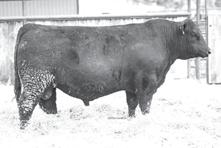


Group 2 South Devon Fall Bulls MBT Index
Consigned by DLCC Ranch, lot 707 led the MBT Index category with a MBT of 110. Sired by DLCC Gold Dust 64G, this bull reported an ADG of 3.88, a WDA of 3.11 and EPDs of BW 0.7, WW 72, YW 111, M 19, RFI -0.92 and Eff 111.
Placing second was lot 703 with a MBT of 105. Sired by DLCC Montana Fate 5J and consigned by DLCC Ranch, this bull reported an ADG of 3.75, a WDA of 2.96 and EPDs of BW 1.2, WW 73, YW 115, M 12, RFI -1.01 and Eff 106.
With a MBT of 103, lots 700 and 704 tied for third place.
Consigned by Thompson Land and Cattle, lot 700, a son of TLC General Patton, reported an ADG of 3.62 and a WDA of 2.83, with EPDs of BW 0.5, WW 55, YW 84, M 20, RFI 0.53 and Eff 102.
Lot 704, consigned by DLCC Ranch and another son of DLCC Gold Dust 64G, reported an ADG of 3.53, a WDA of 2.75 and EPDs of BW 2.5, WW 79, YW 120, M 15, RFI 0.24 and Eff 104.
Finishing in fifth place was lot 706 with a MBT of 100. Another son of DLCC Montana Fate 5J consigned by DLCC Ranch, this bull reported an ADG of 3.26
and a WDA of 2.87, as well as EPDs of BW 0.8, WW 67, YW 101, M 13, RFI 3.15 and Eff 99.
Group 2 South Devon Spring Bulls MBT Index Placing strong in all of the categories, lot 708 secured a first-place position in the South Devon Spring Bulls MBT Index category with a MBT of 110. Consigned by JVM Cattle Company, this son of WGF Hondo had an ADG of 2.88, a WDA of 3.48 and has EPDs of BW 2.2, WW 62, YW 96, M 25, RFI 1.54 and Eff 97.
Sharing second place with a MBT of 104 were lots 711 and 714.
Lot 711, consigned by C/N Ranch and sired by DLCC Grandeur 42G, reported an ADG of 2.36, a WDA of 3.01 and EPDs of BW -0.8, WW 62, YW 94, M 16, RFI -0.04 and Eff 104.
Another son of DLCC Grandeur 42G, lot 714, consigned by C/N Ranch, had an ADG of 2.45, a WDA of 3.14 and has EPDs of BW 0.5, WW 54, YW 82, M 15, RFI -0.59 and Eff of 104.
Consigned by JVM Cattle Company and sired by WGF Hondo, lot 709 finished in fourth place with an Eff of 99. This bull reported an ADG of 2.18, a WDA of 3.03 and EPDs of BW 19, WW 53, YW 82, M 20, RFI -3.08 and Eff of 102.

Lot 713, consigned by C/N Ranch, landed on the leaderboard in fifth place with an MBT of 93. A son of DLCC Grandeur 42G, this bull reported an ADG of 2.18, a WDA of 2.71 and has EPDs of BW -2.1, WW 50, YW 70, M 18, RFI 2.83 and Eff 90.
Midland Bull Test Awards Sale bulls in each breed qualify for Midland Bull Test Performance Awards, based on performance, semen evaluation and soundness. Breeds with less than 30 head and all fall bulls qualify for honors as the MBT High Indexing Bull and High Efficiency Bull.
As of March 9, pending semen results and registration documents, the High Indexing South Devon Bull Award was shared between lots 707 and 708 with a MBT of 110. The Reserve Indexing South Devon Bull was lot 703 with a MBT of 105.
With an Eff of 111, lot 707 received the High Efficiency South Devon Bull Award, while lots 703 and 705, with an Eff of 106, shared the title of Reserve High Efficiency South Devon Bull.
This set of South Devon bulls will sell at the Midland Bull Test Final Sort Sale on April 3 in Columbus, Mont. To view test results in their entirety, visit midlandbulltest.com

The 2025 Midland Bull Test Final Sort Sale will offer a massive selection of over 350 top-notch Angus bulls that reported impressive breed data during this year’s test.
Spring-born Angus bulls were split into two groups and two classes. Class 1 includes low-birth bulls, while Class 2 consists of average- and above-average weight bulls.
Fall-born bulls were broken out in Group 1.
Final test results show a collective average daily gain (ADG) for Group 1 Class 1 bulls of 3.61 and a collective weight per day of age (WDA) of 3.25. Group 1 Class 2 bulls had an average ADG of 3.63 and WDA of 3.31, and Group 1 fall Angus bulls had an average ADG of 3.74 and WDA of 3.03.
In Group 2 Class 1, the final report shows a collective ADG of 3.11 and a WDA of 3.04, while Group 2 Class 2 bulls had an average ADG of 3.24 and WDA of 3.25.
Leaders in each group and class in ADG, WDA, Efficiency (Eff) and Midland Bull Test (MBT) Index are listed below.
Angus bulls will sell on April 4 as lots 3 through 527.
Group 1 Class 1 (low birth)
Angus Spring Bulls ADG
A two-way tie occurred
between lots 70 and 75 for the highest ADG across Group 1 Class 1 Angus bulls. Both bulls were consigned by 7 Oaks Angus of Durant, Iowa and reported an ADG of 4.87.
Lot 70 posted a WDA of 3.57 and EPDs of BW 0.3, WW 95, YW 160, M 30, RFI 3.04, Eff 102 and MBT of 111. He was sired by DB Iconic G95.
Lot 75, sired by Connealy Craftsman, had a WDA of 4.04 and has EPDs of BW 0.9, WW 73, YW 136, M 32, RFI 2.24, Eff 103 and MBT 116.
Following in third place was lot 151, another son of DB Iconic G95, with an ADG of 4.64. Consigned by Byergo Beef Genetics LLC of Dearborn, Mo., this bull posted a WDA of 3.90 and EPDs of BW 0.9, WW 93, YW 164, M 31, RFI 2.82 Eff 105 and MBT 117.
Lot 146 had an ADG of 4.46 – the fourth highest across the Group 1 Class 1 Angus bulls. This son of Car Don Annuity 114 was consigned by Dawson Farms LLC of Hanover, Mich. and reported a WDA of 3.62, as well as EPDs of BW 0.5, WW 85, YW 155, M 28, RFI 1.41, Eff 99 and MBT 110.
Rounding out the top five Group 1 Class 1 Angus bulls was lot 31 with an ADG of 4.38. This bull
had a WDA of 3.60 and has EPDs of BW -0.6, WW 78, YW 125, M 33, RFI -0.21, Eff 107 and MBT 112. He was sired by Raven Republic 1564 and consigned by Winding River Angus of Billings, Mont. Group 1 Class 2 Angus Spring Bulls ADG Byergo Beef Genetics LLC consigned the leader of the Group 1 Class 2 Angus bulls, lot 156, with an ADG of 4.91. This bull was sired by Ellingson Prolific and has EPDs of BW 3.3, WW 112, YW 192, M 23, RFI 3, Eff 102 and MBT 116. He had a WDA of 3.73.
The bull in second place, lot 101, was consigned by Marda Angus Farm LLC of Lodi, Wis. and posted an ADG of 4.69. Sired by Ingram Heisman 0566, this bull had a WDA of 3.55 and has EPDs of BW 2, WW 94, YW 164, M 34, RFI -1.32, Eff 113 and MBT 116.
Winding River Angus’ lot 30 was third in the class, reporting an ADG of 4.55, as well as a WDA of 3.55 and EPDs of BW 1, WW 88, YW 160, M 35, RFI 1.15, Eff 101 and MBT 113. He was sired by Raven Republic 1564.
An ADG of 4.51 landed lots 124 and 69 in a twoway tie for fourth place.
Lot 124 was consigned by Ryan Cattle of Lodi, Wis. and sired by Hoffman Thed-

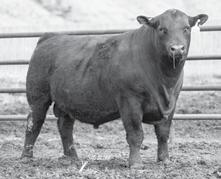
ford. He had a WDA of 3.73 and has EPDs of BW 2.9, WW 104, YW 180, M 28, RFI -2, Eff 113 and MBT 118.
Lot 69, a son of Schiefelbein Top Gun 522, had a WDA of 3.68 and has EPDs of BW 5.1, WW 98, YW 180, M 32, RFI -0.69, Eff 112 and MBT 111. He was consigned by 7 Oaks Angus. Group 1 Angus Fall Bulls ADG
The Group 1 Angus fall bull with the leading ADG was consigned by 7 Oaks Angus. This bull – lot 260 –posted an ADG 5.27 and is a son of DB Iconic G95. He had a WDA of 3.19 and has EPDs of BW 4.2 WW 93, YW 159, M 22, RFI 0.63, Eff 114 and MBT 115.
Following in second place with an ADG of 4.69 was lot 254, a consignment from Curtiss Cattle Company LLC of Parma, Idaho. Sired by Cherry Crk Blue Collar G275, this bull reported a WDA of 2.97 and EPDs of BW -1.5, WW 77, YW 149, M 28, RFI 1.73, Eff 109 and MBT 109.
Lot 266 had the thirdhighest ADG in the group. Consigned by 2XL Cattle Company of Boone, Iowa, this bull had an ADG of 4.64, a WDA of 3.22 and has EPDs of BW 1.9, WW 89, YW 155, M 28, RFI -2.2, Eff 118 and MBT 112. He is a son of Sitz
Dignity 599J.
In fourth was lot 275 with an ADG of 4.51. Consigned by KB Angus of Merritt, Mich. and sired by BJ Surpass, this bull posted a WDA of 2.87 and EPDs of BW 1.2, WW 92, YW 147, M 23, RFI -2.63, Eff 113 and MBT 111.
Rounding out the top five Group 1 Angus fall bulls was lot 257 with an ADG of 4.33. This bull had a WDA of 3.34, with EPDs of BW 5.4, WW 109, YW 181, M 31, RFI -2.58, Eff 115 and MBT 112. He is a son of Car Don Annuity 114 and consignment from Deppe Angus of Waverly, Iowa.
Group 2 Class 1 (low birth)
Angus Spring Bulls ADG
An ADG of 4.23 landed lot 329 at the top of the leaderboard in the Group 2 Class 1 Angus Bulls ADG category. This bull was consigned by Woirhaye Cattle Company of Darby, Mont. and is a son of Sterling Pacific 904. He had a WDA of 3.19 and has EPDs of BW 0.4, WW 72, YW 132, M 23, RFI 2.4, Eff 105 and MBT 113.
Lots 336, 323 and 423 ended in a three-way tie for second place with an ADG of 4.18.
Consigned by Woirhaye Cattle Company, lot 336 has EPDs of BW -0.9, WW 55, YW 115, M 37, RFI 0.2, Eff
115 and MBT 111. He had a WDA of 2.87 and was sired by Jindra Acclaim.
Lot 323 was consigned by H7 Angus Ranch of Driscoll, N.D. and is a son of Basin Jameson 1076. He posted a WDA of 3.46 and EPDs of BW 1.2, WW 95, YW 157, M 26, RFI 3, Eff 99 and MBT 112.
Lot 423, a son of Deer Valley Growth Fund, was consigned by Fuller Cattle LLC of Parma, Idaho. This bull had a WDA of 3.08 and has EPDs of BW -3.4, WW 73, YW 143, M 28, RFI 2.8, Eff 92 and MBT 108.
Woirhaye Cattle Company also consigned the fifth-place bull in the group. Another son of Jindra Acclaim, this bull reported an ADG of 4.14, a WDA of 3.1 and EPDs of BW -1.4, WW 70, YW 131, M 35, RFI -0.4, Eff 115 and MBT 113.
Group 2 Class 2 Angus Spring Bulls ADG The bull with the leading ADG in the Group 2 Class 2 Angus bulls was also consigned by Woirhaye Cattle Company. This bull – lot 328 – posted an ADG of 4.45 and is a son of Sterling Pacific 904. He had a WDA of 3.61 and has EPDs of BW 4.1, WW 102, YW 176, M 9, RFI 0.8, Eff 106 and MBT 117.
Following close behind
Continued on next page



in second place with an ADG of 4.41 was lot 430, a consignment from Deppe Angus sired by Virginia Tech Statesman, this bull reported a WDA of 3.55 and EPDs of BW 2.5, WW 95, YW 171, M 31, RFI 4.5, Eff 97 and MBT 114.
Deppe Angus’ lot 433 had the third-highest ADG in the group. This bull had an ADG of 4.36, a WDA of 3.80 and has EPDs of BW 2.4, WW 84, YW 149, M 25, RFI 2.1, Eff 104 and MBT 116. He was sired by Connealy Craftsman.
In fourth was lot 396 with an ADG of 4.27. Consigned by Fourmile Creek Angus of Great Falls, Mont. and sired by Beal Breakthrough, this bull posted a WDA of 3.41 and EPDs of BW 2.9, WW 88, YW 148, M 16, RFI 4.4, Eff 100 and MBT 110.
Rounding out the top five Group 2 Class 2 Angus ADG bulls was lot 501 with an ADG of 4.23. This bull had a WDA of 3.50, with EPDs of BW 4.6, WW 81, YW 143, M 32, RFI -0.8, Eff 111 and MBT 115. He is a son of Sitz Virtue 11710 and a consignment from Gragg Farms of Boone, N.C. Group 1 Class 1 (low birth)
Angus Spring Bulls WDA
A son of BA7 Oaks Bold Ruler consigned by 7 Oaks Angus, lot 78 was the leader of the Group 1 Class
1 Angus Bulls WDA category with a WDA of 4.11. This bull had an ADG of 3.62 and has EPDs of BW 0.6, WW 92, YW 156, M 30, RFI -1.83, Eff 103 and MBT 106.
With a WDA of 4.04, lot 75 claimed the second-place position. This bull was sired by Connealy Craftsman and has EPDs of BW 0.9, WW 73, YW 136, M 32, RFI 2.24, Eff 103 and MBT 116. He had an ADG of 4.87 and was consigned by 7 Oaks Angus.
The third-place bull was lot 77 with a WDA of 3.94. Sired by BA7 Oaks Bold Ruler and consigned by 7 Oaks Angus, this bull had an ADG of 3.93 and has EPDs of BW 0.4, WW 80, YW 135, M 19, RFI -1.88, Eff 107 and MBT 108.
Byergo Beef Genetics LLC consigned lot 151, a son of DB Iconic G95, with the fourth place WDA of 3.90. He reported an ADG of 4.64 and EPDs of BW 0.9, WW 93, YW 164, M 31, RFI 2.82, Eff 105 and MBT 117.
Next was lot 61 with a WDA of 3.88. This bull was a joint consignment by 7 Oaks Angus and Eagle Grip Cattle Company of Denair, Calif. Sired by GB Fireball 672, he had an ADG of 3.88 and has EPDs of BW -0.4, WW 82, YW 147, M 25, RFI -0.09, Eff 102 and
MBT 107.
Group 1 Class 2 Angus
Spring Bulls WDA
Lot 74 topped the leaderboard in the Group 1 Class 2 Angus Bulls WDA category with a WDA of 4.22. Consigned by 7 Oaks Angus and sired by Ellingson Deep River, this bull had an ADG of 4.29 and has EPDs of BW 4.4, WW 99, YW 1162, M 31, RFI -0.62, Eff 104 and MBT 112.
Eagle Grip Cattle Company consigned the secondplace bull in the group, lot 52, with a WDA of 4.07. This son of DB Iconic G95 posted an ADG of 4.46 and EPDs of BW 2.8, WW 98, YW 165, M 23, RFI -0.85, Eff 104 and MBT 112.
In third was lot 18 with a WDA of 3.88. This bull was consigned by Aiton Angus of Harlowton, Mont. and sired by EZAR Step Up 9178. He has EPDs of BW 3, WW 91, YW 161, M 35, RFI 0.76, Eff 96 and MBT 106. He had an ADG of 3.62.
Lot 76, consigned by 7 Oaks Angus, came in fourth with a WDA of 3.83. A son of Sitz Barricade 632F, this bull posted an ADG of 3.79 and EPDs of BW 3.6, WW 74, YW 133, M 20, RFI -0.47, Eff 101 and MBT 103.
Rounding out the group was lot 150, a son of Ellingson Prolific consigned by Byergo Beef Genetics LLC, with a WDA of 3.82. This
bull had an ADG of 4.29 and has EPDs of BW 2, WW 93, YW 164, M 29, RFI -0.67, Eff 109 and MBT 113.
Group 1 Angus Fall Bulls WDA
A son of Car Don Annuity 114 consigned by Deppe Angus, lot 257 was the leader of the Group 1 Angus Fall Bulls WDA category with a WDA of 3.34. This bull had an ADG of 4.33 and has EPDs of BW 5.4, WW 109, YW 181, M 31, RFI -2.58, Eff 115 and MBT 112.
With a WDA of 3.32, Deppe Angus’ lot 256 claimed the second-place position. This bull was sired by Deer Valley Growth Fund, with an ADG of 4.29 and EPDs of BW 1.4, WW 87, YW 154, M 34, RFI -0.17, Eff 112 and MBT 111.
Group
Group
Group
Group 2 Class 2 Angus Spring Bulls
Group 1 Class 1 (low birth) Angus

Group

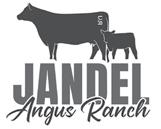
Group


Group
Deppe Angus also had the third-place bull, lot 255, with a WDA of 3.31. Another son of Deer Valley Growth Fund, this bull had an ADG of 4.11 and has EPDs of BW 1.9, WW 83, YW 145, M 27, RFI -1.72, Eff 114 and MBT 110.
2XL Cattle Company consigned lot 269, a son of BJ Surpass, with the fourth place WDA of 3.26. He reported an ADG of 3.62 and EPDs of BW 2.7, WW 92, YW 150, M 38, RFI 0.45, Eff 104 and MBT 105.
A two-way tie for fifth place occurred between lots 250 and 266, both of which had a WDA of 3.22.
Lot 250 was consigned by Byergo Beef Genetics LLC and sired by Connealy Craftsman. He had an ADG of 3.53 and has EPDs of BW 1.4, WW 72, YW 133, M 27, RFI -5.06, Eff 121 and MBT 109.
Lot 266, a son of Sitz Dignity 599J, reported an ADG of 4.64 and EPDs of BW 1.9, WW 89, YW 155, M 28, RFI -2.2, Eff 118 and MBT 112. He was consigned by 2XL Cattle Company.
Group 2 Class 1 (low birth) Angus Spring Bulls WDA
In Group 2 Class 1, the WDA leader was lot 300 with a WDA of 3.58. This bull was consigned by Granger Angus of Great Falls, Mont. and sired by Granger Pacman 224. He has EPDs of BW 0.5, WW 67, YW 127, M 32, RFI 3.8, Eff 114 and MBT 109, as well as an ADG of 3.18.
The second-place position was claimed by lot 426 with a WDA of 3.51. Consigned by Deppe Angus and sired by Crouch Congress, this bull posted an ADG of 4 and EPDs of BW 0.3, WW 72, YW 124, M 17, RFI 3.1, Eff 90 and MBT 111.
Third place went to lot 323 with a WDA of 3.46. This bull had an ADG of 4.18 and has EPDs of BW 1.2, WW 95, YW 157, M 26, RFI 3, Eff 99 and MBT 112. He was consigned by H7 Angus Ranch and sired by Basin Jameson 1076.
In fourth place was lot 467, consigned by Spencer and Sons Angus of Fromberg, Mont., reporting a WDA of 3.45. A son of Schiefelbein Showman 338, this bull had an ADG of 3.18 and has EPDs of BW -0.5, WW 78, YW 135, M 26, RFI 2.2, Eff 84 and MBT 101.
Deppe Angus’ lot 427 was fifth in the class with a WDA of 3.44. This son of Crouch Congress posted an ADG of 3.55 and EPDs of BW 0.6, WW 67, YW 112, M 25, RFI 1.8, Eff 93 and MBT 108.
Group 2 Class 2 Angus Spring Bulls WDA
A WDA of 3.80 landed lot 433 at the top of the Group 2 Class 2 Angus WDA leaderboard. A son of Connealy Craftsman, this bull had an ADG of 4.36 and has EPDs of BW 2.4, WW 84, YW 149, M 25, RFI 2.1, Eff 104 and MBT 116. He
was consigned by Deppe Angus.
H7 Angus Ranch’s lot 321 claimed second-place honors with a WDA of 3.78. This bull was sired by Basin Jameson 1076 and had an ADG of 4.05. He has EPDs of BW 2.8, WW 97, YW 160, M 28, RFI -2.3, Eff 116 and MBT 115.
Lot 474 was third in the lineup with a WDA of 3.69. This bull was sired by Deer Valley Growth Fund and reported an ADG of 3.68, as well as EPDs of BW 0.9, WW 78, YW 139, M 28, RFI 4, Eff 86 and MBT 103. He was consigned by Wheeler Cattle of Prosser, Wash.
Next was lot 403, a son of Hart No Doubt 9517 consigned by Moore Angus of Artesian, S.D., with a WDA of 3.68. He had an ADG of 3.41 and has EPDs of BW 5.2, WW 89, YW 150, M 33, RFI -0.5, Eff 76 and MBT 102.
The fifth-place bull was lot 470 with a WDA of 3.67. Consigned by Middlemist Cattle of Polson, Mont. and sired by Sitz Barricade 632F, this bull posted an ADG of 3.36, RFI 1.8, Eff 99 and MBT 107. Information for BW, WW, YW and M were not reported for this bull.
Group 1 Class 1 (low birth) Angus Spring Bulls Eff Strasburg Angus of Marshall, Wis. consigned the top Eff bull in the Group 1 Class 1 Angus bulls. Lot 125 was sired by Woodhill Reality and posted an Eff of 123. He had an ADG of 3.44, a WDA of 3.20 and has EPDs of BW -0.2, WW 86, YW 137, M 28, RFI -5.5 and MBT 106.
The second bull in the class was lot 29 with an Eff of 119. This bull had an ADG of 4.06, a WDA of 3.40 and has EPDs of BW -1, WW 73, YW 139, M 41, RFI -3.77 and MBT 110. He was sired by Wilks Regiment 9035 and consigned by Winding River Angus.
Rounding out a competitive top three was lot 235, consigned by VGA Livestock of Manhattan, Mont., with an Eff of 116. This bull was sired by CAR Legendary 026 and had an ADG of 108, a WDA of 3.26 and has EPDs of BW 0.3, WW 75, YW 123, M 15, RFI -3.98 and MBT 110.
Group 1 Class 2 Angus Spring Bulls Eff
With an Eff of 127, lot 132 took the top spot on the Group 1 Class 2 Angus Eff leaderboard. Sired by J Trademark 1037 and consigned by Strasburg Angus, this bull reported an ADG of
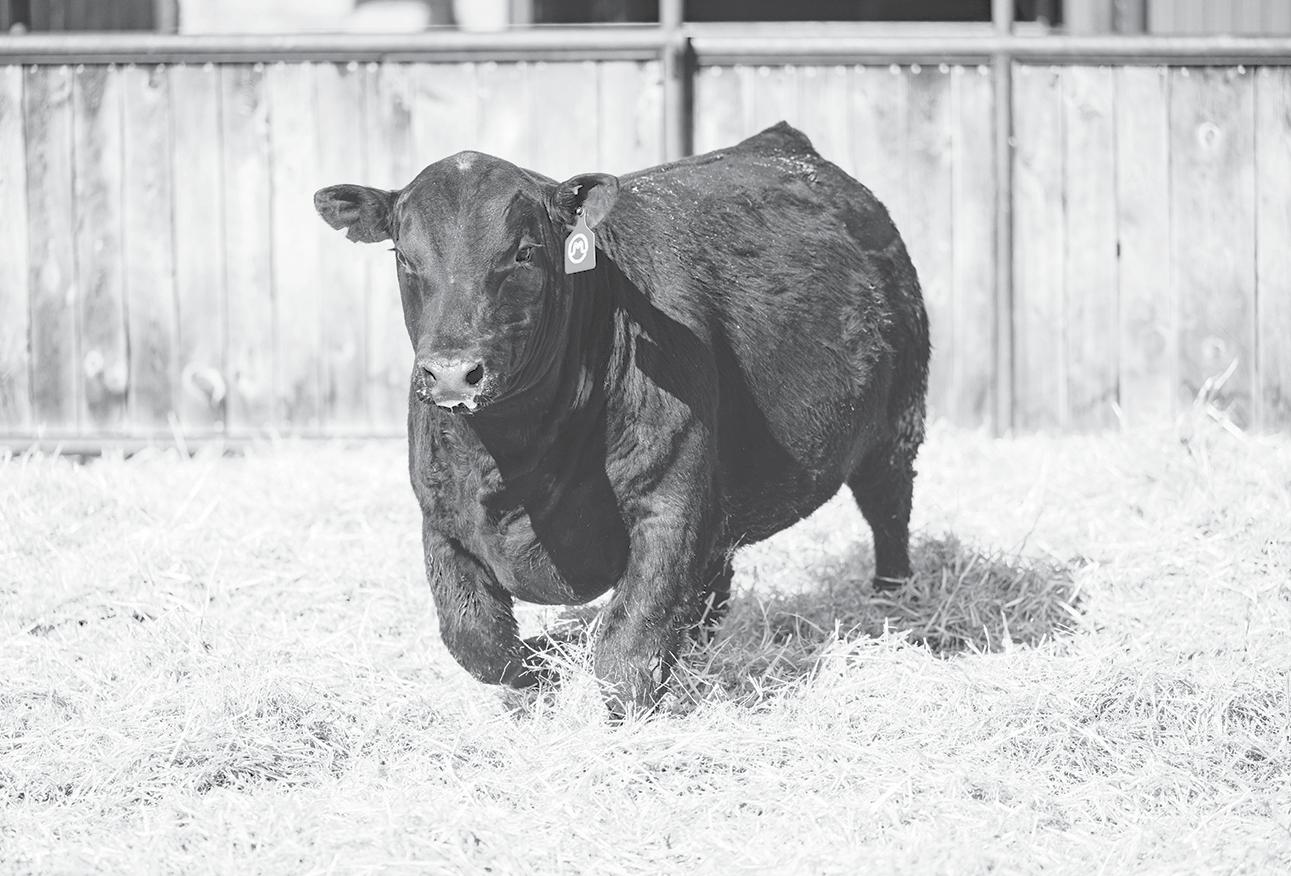
3.75 and a WDA of 3.35, as well as EPDs of BW 1, WW 86, YW 147, M 25, RFI -4.42 and MBT 111.
Lot 174 was second in the class with an Eff of 118. This bull had an ADG of 4.06, a WDA of 3.34 and has EPDs of BW 1.5, WW 80, YW 140, M 31, RFI -2.68 and MBT 105. He was consigned by R Value Farm of Rosebush, Mich. and sired by Connealy Craftsman.
Lots 166 and 32 landed in a two-way tie for third place, each posting an Eff of 114.
Lot 166 was consigned by KB Angus and had an ADG of 3.88 and a WDA of 3.2, as well as EPDs of BW 1.8, WW 84, YW 138, M 27, RFI -2.9 and MBT 103. He is another son of Connealy Craftsman.
Lot 32, a consignment from Winding River Angus, reported an ADG of 3.71, a WDA of 3.12 and EPDs of BW 1.3, WW 80, YW 144, M 34, RFI -3.02 and MBT 103. He was sired by Virginia Tech Statesman.
A four-way tie for fifth place rounded out the competitive Group 1 Class 2 Angus Eff category, with lots 124, 101, 22 and 42 all posting an Eff of 113.
Lot 124, consigned by Ryan Cattle and sired by Hoffman Thedford, had an ADG of 4.51, a WDA of 3.73 and has EPDs of BW 2.9, WW 104, YW 180, M 28, RFI -2 and MBT 118.
Marda Angus Farm LLC’s lot 101 is a son of Ingram Heisman 0566, with an ADG of 4.69, a WDA of 3.55 and EPDs of BW 2, WW 94, YW 164, M 34, RFI -1.32 and MBT 116.
Lot 22 is a son of S

Architect 9501 consigned by Spring Creeks Cattle Company of Boscobel, Wis. He posted an ADG of 3.97, a WDA of 3.67 and EPDs of BW 1.9, WW 84, YW 140, M 24, RFI -1.63 and MBT 107. Additionally, lot 42, a consignment by Les Craft Angus of Columbus, Mont., had an ADG of 4.24, a WDA of 3.80 and has EPDs of BW 4.2, WW 96, YW 167, M 20, RFI -2.36 and MBT 114. He was sired by
Baldridge Versatile. Group 1 Angus Fall Bulls Eff
Byergo Beef Genetics
LLC consigned the leader of the Group 1 Angus fall bulls in the Eff category – lot 250, with an Eff of 121. This bull was sired by Connealy Craftsman and has EPDs of BW 1.4, WW 72, YW 133, M 27, RFI -5.06 and MBT 109. He had an ADG of 3.53 and a WDA of 3.22. The bull in second place, lot 266, was con-
signed by 2XL Cattle Company and posted an Eff of 118. Sired by Sitz Dignity 599J, this bull had an ADG of 4.64, a WDA of 3.22 and has EPDs of BW 1.9, WW 89, YW 155, M 28, RFI -2.2 and MBT 112.
Deppe Angus’ lot 257 was third in the class with an Eff of 115. He reported an ADG of 4.22, a WDA of 3.34 and EPDs of BW 5.4, WW 109, YW 181, M 31, RFI -2.58 and MBT 112. He
Continued on next page
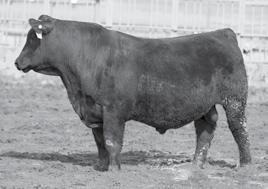
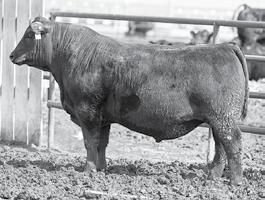


is a son of Car Don Annuity 114.
An Eff of 114 landed lots 260 and 255 in a twoway tie for fourth place.
Lot 260 was consigned by 7 Oaks Angus and sired by DB Iconic G95. He had an ADG of 5.27, a WDA of 3.19 and has EPDs of BW 4.3, WW 93, YW 159, M 22, RFI 0.63 and MBT 115.
Lot 255, a son of Deer Valley Growth Fun, had an ADG of 4.11, a WDA of 3.31 and has EPDs of BW 1.9, WW 83, YW 145, M 27, RFI -1.72 and MBT 110. He was consigned by Deppe Angus.
Group 2 Class 1 (low birth)
Angus Spring Bulls Eff
Lot 477, a son of Connealy Clarity consigned by Michigan State University in East Lansing, Mich., was the leader of the Group 2 Class 1 Angus Bulls Eff category with an Eff of 122. This bull had an ADG of 3.27, a WDA of 3.18 and has EPDs of BW -1, WW
92, YW 161, M 37, RFI -6.4 and MBT 105.
With an Eff of 115, lots 315 and 335 tied for second place.
Lot 315 was sired by Mohnen Hollywood and has EPDs of BW 0.7, WW 67, YW 122, M 34, RFI -1.3 and MBT 111. He had an ADG of 3.95, a WDA of 3.18 and was consigned by Schrock Angus Farms of Brock, Neb. Lot 335 was sired by Jindra Acclaim and consigned by Woirhaye Cattle Company. This bull had an ADG of 4.14, a WDA of 3.1 and has EPDs of BW -1.4, WW 70, YW 131, M 35, RFI -0.4 and MBT 113.
Group 2 Class 2 Angus Spring Bulls Eff
J.J. Scheckel Performance Angus of Bellevue, Iowa consigned the leader of the Group 2 Class 2 Eff Angus Bulls, lot 517, with an Eff of 125. This bull was sired by Millars Duke 816 and has EPDs of BW 4.6,
WW 75, YW 122, M 24, RFI -1.8 and MBT 109. He had an ADG of 3.73 and a WDA of 3.1.
The bull in second place, lot 312, was consigned by Schrock Angus Farms and posted an Eff of 119. Sired by Mohnen Historic, this bull had an ADG of 2.91, a WDA of 3.26 and has EPDs of BW 1.8, WW 75, YW 132, M 35, RFI -4 and MBT 103.
Gragg Farms’ lot 506 was third in the class with an Eff of 118. He reported an ADG of 3.59, a WDA of 3.27 and EPDs of BW 3.9, WW 78, YW 136, M 23, RFI -2.2 and MBT 110. He is a son of Sitz Galactic 723G.
An Eff of 117 landed lots 390 and 510 in a twoway tie for fourth place.
Lot 390 was consigned by Berry Angus of Reed Point, Mont. and sired by RB Active Duty 010. He had an ADG of 3.41, a WDA of 3.41 and has EPDs of BW 2, WW 75, YW 123, M 24, RFI -1.9 and MBT 108.
Lot 510, a son of Sitz Royalty 1299, had an ADG of 3.36, a WDA of 3.22 and has EPDs of BW 0.7, WW 79, YW 143, M 36, RFI -2 and MBT 106. He was consigned by Gragg Farms.
Group 1 Class 1 (low birth) Angus Spring Bulls MBT Index
A MBT of 117 landed lot 151 at the top of the Group 1 Class 1 Angus MBT Index leaderboard. A son of DB Iconic G95, this bull had an ADG of 4.64, a WDA of 3.90 and has EPDs of BW 0.9, WW 93, YW 164, M 31, RFI 2.82 and Eff 105. He was consigned by Byergo Beef Genetics LLC.
7 Oaks Angus’ lot 75 claimed second-place honors with a MBT of 116. This bull was sired by Connealy Craftsman and had an ADG of 4.87, a WDA of 4.04 and has EPDs of BW 0.9, WW 73, YW 136, M 32, RFI 2.24 and Eff 103.
Lot 31 was third in the lineup with a MBT of 112. This bull was sired by Raven Republic 1564 and reported

an ADG of 4.38, a WDA of 3.60 and EPDs of BW -0.6, WW 78, YW 125, M 33, RFI -0.21 and Eff 107. He was consigned by Winding River Angus.
A three-way tie occurred between lots 70, 109 and 161 to round out this competitive set of Angus bulls. Each one posted a MBT of 111.
Lot 70 was consigned by 7 Oaks Angus and sired by DB Iconic G95. He had an ADG of 4.87, a WDA of 3.57 and EPDs of BW 0.3, WW 95, YW 160, M 30, RFI 3.04 and Eff 102.
Lot 109, a son of LVVF Tanker 14, reported an ADG of 4.33 and a WDA of 3.38, as well as EPDs of BW 0.4, WW 88, YW 153, M 27, RFI -1.08 and Eff 108. He was consigned by Marda Angus Farms LLC.
A son of S Armstrong consigned by Bluegrass Angus Farm of Lyons, Neb., lot 161 reported an ADG of 4.06, a WDA of 3.54 and EPDs of BW 1.1, WW 95, YW 167, M 25, RFI -0.2 and Eff 105.
Group 1 Class 2 Angus Spring Bulls MBT Index Ryan Cattle consigned the leader of the Group 1 Class 2 Angus bulls, lot 124, with a MBT of 118. This bull was sired by Hofman Thedford and has EPDs of BW 2.9, WW 104, YW 180, M 28, RFI -2 and Eff 113. He had an ADG of 4.51 and a WDA of 3.73.
In a two-way tie, both lots 101 and 156 claimed the second-place position with a MBT of 116.
Lot 101 was consigned by Marda Angus Farm LLC, posting an ADG of 4.69 and a WDA of 3.55. This son of Ingram Heisman 0566 has EPDs of BW 2, WW 94, YW 164, M 34, RFI -1.32 and Eff 113.
Byergo Beef Genetic LLC’s lot 156 had an ADG of 4.91, a WDA of 3.73 and has EPDs of BW 3.3, WW 112, YW 192, M 23, RFI 3 and Eff 102. He is a son of Ellingson Prolific.
A MBT of 114 landed Les Craft Angus’ lot 42 third in the group. This bull was sired by Baldridge Versatile and reported an ADG of 4.24, a WDA of 3.80 and EPDs of BW 4.2, WW 96, YW 167, M 20, RFI -2.36 and Eff 113.
With a MBT of 113, both lot 30 and lot 150 finished fifth in the class.
Lot 30, a son of Raven Republic 1564 consigned by Winding River Angus, had an ADG of 4.55 and a WDA of 3.55, as well as EPDs of BW 1, WW 88, YW 160, M 35, RFI 1.15 and Eff 101.
Lot 150 is a son of Ellingson Prolific with an ADG of 4.29 and a WDA of 3.82. A consignment by Byergo Beef Genetics LLC, this bull has EPDs of BW 2, WW 93, YW 164, M 29, RFI -0.67 and Eff 109.
Group 1 Angus Fall Bulls MBT Index
A MBT of 115 put lot 260 at the top of the Group 1 Angus Fall Bulls MBT Index leaderboard. A son of DB Iconic G95, this
bull had an ADG of 5.27, a WDA of 3.19 and has EPDs of BW 4.3, WW 93, YW 159, M 22, RFI 0.63 and Eff 114. He was consigned by 7 Oaks Angus.
2XL Cattle Company’s lot 266 and Deppe Angus’ lot 257 tied for second-place honors with a MBT of 112.
Lot 266, a son of Sitz Dignity 599J, reported an ADG of 4.64, a WDA of 3.22 and EPDs of BW 1.9, WW 89, YW 155, M 28, RFI -2.2 and Eff 118.
Sired by Car Don Annuity 114, lot 257 had an ADG of 4.33, a WDA of 3.34 and has EPDs of BW 5.4, WW 109, YW 181, M 31, RFI -2.58 and Eff 115.
Another two-way tie occurred for fourth place between lots 256 and 275, both with a MBT of 111.
Lot 256 was a consignment by Deppe Angus, sired by Deer Valley Growth Fund. This bull posted an ADG of 4.29, a WDA of 3.32 and EPDs of BW 1.4, WW 87, YW 154, M 34, RFI -0.17 and Eff 112.
Lot 275, a son of BJ Surpass consigned by KB Angus, had an ADG of 4.51, a WDA of 2.87 and has EPDs of BW 1.2, WW 92, YW 147, M 23, RFI -2.63 and Eff 113.
Group 2 Class 1 (low birth) Angus Spring Bulls MBT Index
A son of Ellingson Deep River and consigned by Sunny Okanogan Angus of Omak, Wash., lot 346 was the leader of the Group 2 Class 1 Angus Bulls MBT Index category with a MBT of 117. This bull had an ADG of 3.86, a WDA of 3.32 and has EPDs of BW 1.1, WW 80, YW 142, M 28 and Eff 0. No RFI data was reported for this bull.
With a MBT of 114, lots 347 and 358 tied for second place in the class.
Lot 347 was sired by Sitz Milestone, reporting an ADG of 4, a WDA of 3.27 and EPDs of BW 0.8, WW 75, YW 142, M 27, RFI 0.42 and Eff 109. He was also consigned by Sunny Okanogan Angus.
Lot 358, a son of KCF Bennett Exponential, had an ADG of 3.82, a WDA of 3.15 and has EPDs of BW 0.9, WW 90, YW 148, M 19, RFI -2.24 and Eff 110. He was consigned by Burkholder and Unruh of Warden, Wash.
Rounding out this competitive class was a threeway tie for third place between lots 329, 348 and 335, all posting a MBT of 113.
Lot 329 was consigned by Woirhaye Cattle Company and had an ADG of 4.23 and a WDA of 3.19. This son of Sterling Pacific has EPDs of BW 0.4, WW 72, YW 132, M 23, RFI 2.44 and Eff 105.
Sunny Okanogan Angus’ lot 348 is a son of Granger Cash 642, reporting an ADG of 4, a WDA of 3.14 and EPDs of BW -0.4, WW 75, YW 130, M 28, RFI -0.9 and Eff 110.
Sired by Jindra Acclaim,
lot 335 posted an ADG of 4.14, a WDA of 3.10 and EPDs of BW -1.4, WW 70, YW 131, M 35, RFI -0.4 and Eff 115. He was consigned by Woirhaye Cattle Company.
Group 2 Class 2 Angus Spring Bulls MBT Index
In the Group 2 Class 2 Angus bulls, the MBT Index leader was lot 328 with a MBT of 117. This bull was consigned by Woirhaye Cattle Company and sired by Sterling Pacific 904. He has EPDs of BW 4.1, WW 102, YW 176, M 9, RFI 0.84 and Eff 106, as well as an ADG of 4.45 and a WDA of 3.61.
The second-place position was claimed by lot 433 with a MBT of 116. Consigned by Deppe Angus and sired by Connealy Craftsman, this bull posted an ADG of 4.36, a WDA of 3.80 and EPDs of BW 2.4, WW 84, YW 149, M 25, RFI 2.09 and Eff 104.
With a MBT of 115, lots 321 and 501 tied for third place.
Lot 321 had an ADG of 4.05, a WDA of 3.78 and has EPDs of BW 2.8, WW 97, YW 160, M 28, RFI -2.3 and Eff 116. He was consigned by H7 Angus Ranch and sired by Basin Jameson 1076.
Lot 501, consigned by Gragg Farms, reported an ADG of 4.23 and a WDA of 3.50. A son of Sitz Virtue
11710, this bull has EPDs of BW 4.6, WW 81, YW 143, M 32, RFI -0.8 and Eff 111.
Deppe Angus’ lot 430 was fifth in the class with a MBT of 114. This son of Virginia Tech Statesman posted an ADG of 4.41, a WDA of 3.55 and EPDs of BW 2.5, WW 95, YW 171, M 31, RFI 4.49 and Eff 97. Midland Bull Test Awards Sale bulls in each breed qualify for Midland Bull Test Performance Awards based on performance, semen evaluation and soundness.
Angus bulls across all groups and classes qualify for awards including the Champion Pen of Three, the Champion Sire Group, the Champion High Indexing Bull, the Champion ADG Bull, the Champion WDA Bull, the Champion Low Birth ADG Bull and the Champion High Efficiency Bull.
As of March 9, pending semen results and registration documents, the Overall Champion Pen of Three from both groups were lots 150, 151 and 156 consigned by Byergo Beef Genetics, with an average MBT of 115. Sunny Okanogan Angus had the Overall Reserve Champion Pen of Three with lots 346, 347 and 348, with an average MBT of 114.6.
In Group 1, the Cham-
pion High Indexing Bull was lot 124, consigned by Ryan Cattle, with a MBT of 118. Byergo Beef Genetics LLC’s lot 151 was the Reserve High Indexing Bull with a MBT of 117.
Byergo Beef Genetics LLC also consigned the Champion Group 1 ADG Bull – lot 156 – reporting an ADG of 4.91. Two bulls consigned by 7 Oaks Angus – lots 70 and 75 –both received honors as the Reserve Champion ADG Bulls in the group with an ADG of 4.87.
7 Oaks Angus also consigned the top two WDA bulls in Group 1. The Champion WDA Bull was lot 74 with a WDA of 4.22 and lot 78 was reserve with a WDA of 4.11.
7 Oaks Angus took home even more honors, with two bulls – lots 70 and 75 – receiving the title of Group 1 Champion Low Birth ADG Bull. Both bulls reported an ADG of 4.87. Lot 151 was the Reserve Low Birth ADG Bull in Group 1 with an ADG of 4.64. He was consigned by Byergo Beef Genetics LLC.
The Champion Group 1 High Efficiency Bull was lot 132, consigned by Strasburg Angus, with an Eff of 127. The Reserve High Efficiency Bull was also consigned by Strasburg Angus, lot 125, with an Eff of 123.
Byergo Beef Genetics LLC took home honors with



A son of Black Magic whose dam is also the mother of ST Genetic’s Black Onyx. He carries the CAB Stamp and will sire a lot of
and structure. He will produce very stylish cows with perfect udders. • Selling 2/3 interest and full
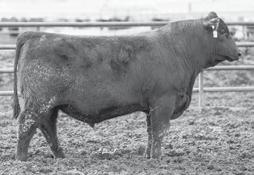
the Champion Group 1 Sire Group, while Marda Angus Farms LLC took home Reserve Champion Group 1 Sire Group honors.
The Champion Sire Group Award went to lots 150, 154 and 156 – all sired by Ellingson Prolific – and the Reserve Champion Sire Group Award went to lots 100, 101 and 102 – all sired by Ingram Heisman.
Additionally, the Champion High Indexing Group 1 Angus Fall Bull was lot 260, consigned by 7 Oaks Angus, with a MBT of 115. Both Deppe Angus’ lot 257 and 2XL Cattle Company’s lot 266 received reserve honors with a MBT of 112.
The Champion High Efficiency Group 1 Angus Fall Bull was Byergo Beef Genetics LLC’s lot 250 with an Eff of 121, followed by lot 266, a consignment by 2XL Cattle Company with an Eff of 118, in the reserve position.
In Group 2, Woirhaye Cattle Company’s lot 328 and Sunny Okanogan
Angus’ lot 346 both received the Champion High Indexing Bull Award, reporting a MBT of 117. With a MBT of 116, Deppe Angus’ lot 433 received honors as the Reserve High Indexing Bull.
The Champion Group 2 ADG Bull was lot 328, consigned by Woirhaye Cattle Company, with an ADG of 4.45. Lot 430, consigned by Deppe Angus, was the Reserve Champion ADG Bull in the group with an ADG of 4.41.
Deppe Angus also consigned the Champion Group 2 WDA Bull, lot 433, with a WDA of 3.8. Taking home reserve honors was H7 Angus’ lot 321 with a WDA of 3.78.
Group 2’s Champion Low Birth ADG Bull was lot 329, reporting an ADG of 4.23. This bull was consigned by Woirhaye Cattle Company. With an ADG of 4.13, Woirhaye Cattle Company’s lot 336, H7 Angus Ranch’s lot 323 and Fuller Cattle LLC’s lot 423 were all honored as the Reserve
Low Birth ADG Bull in Group 2. The Champion Group 2 High Efficiency Bull was lot 517, consigned by J.J. Scheckel Performance Angus with an Eff of 125. The Reserve High Efficiency Bull was lot 477, consigned by Michigan State University, with an Eff of 122.
With an average MBT of 112, lots 327, 328 and 329 – all sired by Sterling Pacific and consigned by Woirhaye Cattle Company – and Deppe Angus’ lots 431, 432 and 433 – all sired by Connealy Craftsman –were honored as the Group 2 Champion Sire Groups. Reserve honors went to H7 Angus Ranch’s lots 321, 322 and 323 – all sired by Basin Jameson – with an average MBT of 111.
This set of Angus bulls will sell at the Midland Bull Test Final Sort Sale on April 4 in Columbus, Mont. To view the test results in their entirety, visit midlandbulltest.com
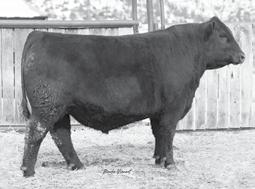

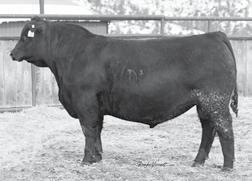


Breeding season is undoubtedly the most strenuous time of year for a ranch’s bull battery, and while pre-breeding nutrition and management is vital to the herd’s rebreeding success, it is also important to ensure bulls have the resources they need afterwards for adequate recovery.
Often, it is easy to pull bulls from the cow herd and essentially forget about them until they are needed again a year later.
However, multiple cattle industry experts remind producers bull management has an impact on calf crop and herd genetics before and after the breeding season, and they note attention should be paid to bulls postbreeding to get them back on track for the next breeding season.
“To achieve a tight calving pattern that will deliver both a uniform crop of calves and a calf per cow per year requires a breeding season of around 63 days,” states Dr. Ron Clarke, owner of Clarke Communication and Consulting and a veterinarian at the Western Canadian Association of Bovine Practitioners, in an Oct. 18, 2021 article published by Canadian Cattlemen
“This means for a mature bull running with 36 or more cows at any one time, there is little time for feeding and resting during this intensely active period. It’s completely understandable after this level of exertion, post-breeding recovery can take between four and eight months,” he adds. “A good recovery period is essential
for bulls to be fit and ready for next year’s breeding season. Post-breeding recovery is important for all ages of bulls, but special attention to this recovery should be given to young bulls that are still growing.”
Close-up observations
After pulling bulls from the cow herd, producers should allow them some time to rest in closer confinement and use the opportunity to make closeup observations and/or run them through the chute if needed.
Because the breeding season is so physically demanding, Kansas State University (KSU) Veterinarian Dr. Bob Larson notes it is important to evaluate bulls’ feet and legs and check for any other kind of bodily harm. He encourages producers to look for swelling, lameness or other movement restrictions.
“Like offensive linemen, bulls are big, heavy animals, which make them prone to feet and leg issues, especially if they have been walking and breeding in rough pastures,” Larson states during an October 2022 episode of KSU’s Cattle Chat podcast.
Many experts also suggest running bulls through the chute to conduct a general health evaluation, administer any needed vaccinations and/ or treat for parasites.
In an Oct. 6, 2023 Iowa State University (ISU) Extension and Outreach publication, ISU Extension and Outreach Beef Program Specialist Dr. Chris Clark notes efficacy of external
Producers in the beef cattle industry primarily select cattle based on temperament to ensure safety.
However, emerging research indicates temperament can significantly influence the productivity and economic outcomes of beef operations.
A bull’s temperament can greatly affect its reproductive success, as stressed or aggressive bulls may undergo hormonal changes leading to reduced libido and lower semen quality, which in turn results in decreased pregnancy rates.
Research suggests both physical characteristics and temperament should be considered when selecting breeding bulls, as temperament is a highly heritable trait.
Given its impact on production and reproductive efficiency, temperament is a critical trait in most breeding programs.
Temperament research
Researchers at the University of Tennessee (UT) investigated the relationships among temperament, behavior and growth in bulls during the 201314 Junior Bull Test at the UT Bull Testing Station in
parasite control has often waned by the end of the breeding season, and bulls may have picked up internal parasites while grazing.
He also remarks, “It may be worthwhile to test for things like trichomonas In a relatively closed herd, this probably isn’t a big concern, but if the bulls have had contact with neighboring herds or if new open cows were added to the herd prior or during the breeding season, testing is wise.”
Oklahoma State University Extension Specialists Parker Henley and Mark Johnson also recommend conducting a breeding soundness exam if bull fertility is in question.
“This can be informative relative to management decisions and save the expense of prepping an infertile bull for an upcoming breeding season,” they say.
Culling decisions
As producers handle their bulls after breeding season, University of Florida Extension Specialist Nick Simmons recommends sorting three ways – mature bulls they plan to maintain, young bulls they plan to develop and cull bulls they plan to sell.
He notes several factors play a role when deciding which bulls to cull, but often the most important are fertility, libido and reproductive failure.
Other reasons include feet and leg injuries; penile injuries; age; temperament; health issues such as lameness, eye issues, lump jaw or respiratory issues and
calf quality.
“Although a lot of emphasis is placed on the capacity of the cow to breed a good-quality calf, remember 50 percent of this quality comes from the bull,” Clarke explains.
“Producers should carefully consider whether the cow or bull is responsible for poor-quality calves,” he continues. “One of the ways to identify this is to examine the quality of calves produced by a set of cows bred to the bull. Where overall quality is good, any poorquality calf is likely to be related to the genetics of the cow rather than the bull.”
Post-breeding nutrition
Often, bulls will come off of summer pasture thinner than they went on, with multiple sources reporting bulls – especially young bulls – dropping one or two body condition scores and up to 200 pounds during the breeding season.
Therefore, it is important to bring bulls back into condition with moderate weight gain over the course of the off season, beginning after bulls are pulled from the herd.
“Even for the bulls one plans on culling, taking time to allow body condition to improve will add value at the time of sale,” Simmons states.
Simmons, among other experts, also notes nutrition is dependent on the age of bulls and the amount of weight they lost during the breeding season.
Clarke says, “Mature bulls in good condition at the end of the breeding sea-
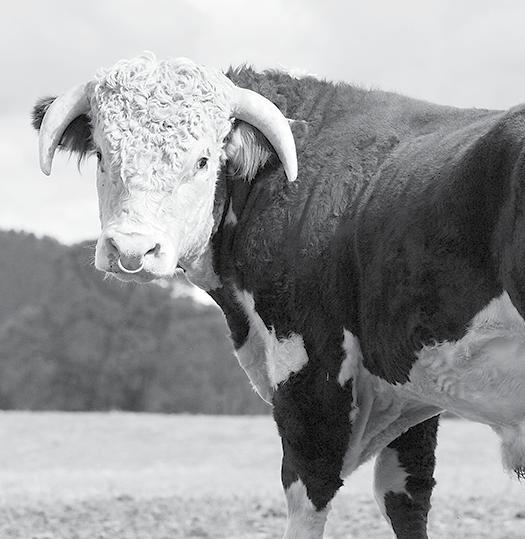
son will easily recover any weight lost through access to good-quality grazing, followed by good-quality winter forage without the need for grains or other supplementary feeding.”
Multiple sources note the importance of avoiding overfeeding, since over-conditioned bulls will have low sperm counts and reduced breeding activity. Therefore, mature bulls in fairly good condition should be managed on an all-roughage diet of eight to 10 percent crude protein fed at two percent of their body weight.
“The aim is to get bulls into an ideal body condition score of 2.5 to three,” Clarke says.
Younger bulls, however, may need increased supplementation for recovery, development and growth.
“For young bulls, rations should be formu-
Spring Hill, Tenn.
The study focused on 60 Black Angus bulls, and data collected included weight, average daily gain (ADG), frame score and ultrasound measurements of carcass quality.
Temperament was assessed by assigning scores from one to five, with one indicating docile behavior and five indicating aggressive behavior.
Data loggers recorded behavioral data, including daily lying time, the duration and frequency of lying and total steps taken over a specified period of time.
During the 84-day testing period, it was found total lying time between day 59 to day 84 was significantly greater for excitable bulls compared to calm bulls.
The study also revealed excitable bulls exhibited higher frame scores and ADG than calm bulls, as well as more backfat.
Temperament and reproductive research
Studies indicate reactive female cattle experience higher rates of pregnancy loss and lower success rates in artificial insemination programs.
Similarly, reactive bulls are linked to lower semen quality, reduced ability to regulate testicular temperature and decreased conception rates in natural mating systems. It’s also been observed excitable bulls tend to have a smaller scrotal circumference.
One of the primary hormones released during stress is cortisol, and research has shown blood cortisol concentrations are elevated in temperamental cattle compared to calm ones.
According to a March 2025 article in the Animal Reproduction Science Journal, a reactive temperament is associated with poor productivity and reproductive performance in bulls.
The article states, “Although temperament does not directly influence testosterone production and sexual precocity in male cattle, there is a trend showing higher cortisol levels and poor reproductive performance are related to greater animal reactivity.”
Additionally, overly reactive bulls with elevated cortisol levels may face physical challenges
when attempting to mount cows. Thus, a calm temperament is crucial for a breeding bull.
“High concentrations of cortisol can suppress the production of luteinizing hormone, influencing the production of testosterone,” the article notes. “A decrease in testosterone concentrations, together with an increase in scrotal temperature, can lead to a transient impairment of semen quality and growth rate.”
Additionally, the increase in scrotal temperature can affect spermatogenesis and semen quality.
Spermatogenesis, the process of sperm production, is directly regulated by testosterone, which is essential for initiating and maintaining the development of mature sperm cells within the testes. Without sufficient testosterone, spermatogenesis cannot proceed properly.
Breeding for temperament
Historically, breeding programs have focused on measurable traits directly linked to profitability, such as body weight.
However, over time,
lated to gain one-half to two pounds per day based on age, size and desired weight gain,” suggests Clark. “Young bulls typically lose 50 to 200 pounds during their first breeding season, so prioritizing protein and energy in their diet will promote growth and subsequent reproductive health.”
“Young bulls fed three to six pounds of grain in the winter, roughage at two percent of body weight and total diet protein content of 10 and 11 percent often reach the target rate of gain,” Clark continues. “For bulls used in both springand fall-calving herds, young bulls typically need to gain more with a target of two to 2.5 pounds per day to recover from weight loss.”
Hannah Bugas is the managing editor of the Wyoming Livestock Roundup. Send comments on this article to roundup@wylr.net.
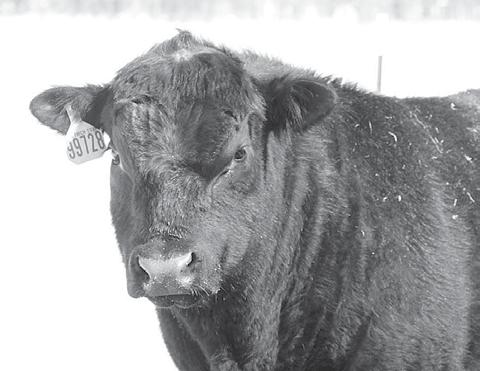
traits like reproduction and longevity have gained attention, and there is now an increasing interest in behavioral traits that facilitate management.
Given the negative implications of poor temperament in individual bulls – and its impact on the herd through their offspring –producers’ emphasis on this trait is well justified.
The primary focus should be on selecting a bull with a calm and docile disposition, a trait which is highly heritable and can significantly enhance the overall temperament of the herd, as these genetics are passed on to calves.
This approach can lead
to easier handling, reduced stress and improved safety for both animals and humans, while improving temperament of future progeny.
Implementing management strategies to enhance herd temperament, such as early acclimation to human handling and factoring temperament into selection and culling decisions, will improve cattle performance and the productivity of beef operations with temperamental cattle.
Melissa Anderson is the editor of the Wyoming Livestock Roundup. Send comments on this article to roundup@wylr.net.
The capacity of cows to calve and raise their babies is what keeps the beef industry going. Fertility plays a critical role in maintaining a sustainable supply chain and ultimately ensuring a steady influx of beef animals to processors.
However, managing fertility is not easy. Even with the reproductive technologies available today, fertility remains heavily influenced by a cow’s environment, making it difficult to separate the genetic from the nongenetic components.
Most fertility problems are often subtle and present themselves as a heifer that took longer to get pregnant or a cow which consistently breeds late in the breeding season. Some cows may require a third service when their contemporaries, on average, need only two cycles to conceive.
In more extreme and costly situations, pregnancy is confirmed but is not carried to term, sometimes resulting in a stillborn calf. The longer it takes to identify the loss, the more expensive and challenging the issue becomes.
Because fertility is
dependent on so many factors, producers can and should invest in management improvements, such as adjustments to breeding protocols and nutrition.
University Extension networks are a great resource to find tools and management recommendations suitable for specific regions to improve breeding practices. Still, it is important to know they may not fully address reproductive challenges in a herd.
So what else can be done?
Traits such as functional longevity and heifer pregnancy help to select for females which conceive earlier and will continue to do so throughout their lives. What many still cannot capture quite well with current selection tools are the hidden losses and stillborn calves with or without physical abnormalities, and this is where research on haplotypes might shed light.
Haplotype versus genetic conditions
It is helpful to know the difference between haplotypes and genetic conditions. With the phenotypes of genetic conditions governed by mutations or abnormal-
ities in one specific gene, a gene which has lost its function or one gaining an entirely different purpose is more noticeable. When a genetic condition is affected by two or more genes – or several mutations across one gene – their identification is not so clear.
Haplotypes cover a larger portion of the genome than genetic conditions influenced by a single gene.
Haplotypes carry groups of markers and genes inherited together, rather than a short slice. Because of this, haplotypes are more powerful tools when used to identify conditions caused by several local mutations.
The American Angus Association (AAA), its members and commercial users of Angus genetics, along with research institutions like the University of Illinois and University of Nebraska-Lincoln have been successful in identifying important genetic conditions affecting the Angus breed. Examples include neuropathic hydrocephalus and double muscling.
Haplotypes are not new to the animal breeding scene.
In dairy, six different haplotypes linked to embryo loss were identified in Holstein cows since 2012. While their exact mechanism is not entirely known, their identification has allowed breeders to make better mating decisions by avoiding the mating of these haplotype carriers.
If any were identified in an Angus population, similar steps could be taken to reduce the frequency of carriers. Exploring the genomic and phenotypic database
To identify any rare but potentially lethal haplotypes, producers not only need to identify the DNA that is passed down, but also when DNA is linked to a fertility problem.
Just like genetic conditions, there may be recessive, additive or dominant haplotypes, meaning problems might only appear in animals with two copies –or they might also be present in those which are carriers and have only one copy of the haplotype.
Of course, turning to the data submitted by association members is a huge piece when investigating haplotypes and their effects
on fertility in the Angus population.
Breeding records, disposal or reason codes and calf records submitted via Angus Herd Improvement Records provide Angus Genetics Inc. (AGI) researchers with the opportunity to test sires and dams to understand which combinations result in either a failed service or inviable calves.
Besides mating information, DNA samples submitted on sires and dams and any inviable calves allows AAA to build a databank and drill further into the research.
Current and future research
Because haplotypes can negatively affect several stages of gestation from embryo implantation to malformations and premature births, AGI is currently investigating the potential effects in all phases of breeding protocols.
To fill out this piece of the puzzle, AGI released the Haplotype Research Calf Death Report, available to association members for submission of information and DNA samples for genomic testing at no cost.
Reporting of stillbirth and early death calves –i.e., before weaning – are welcomed and greatly appreciated. More information can be found at angus. org/agi/research or with AAA customer service representatives.
Other steps the association will explore as part of this research initiative are sequencing key animals and measuring the effect of fertility haplotypes on production traits. This research is a testament to the collaboration between Angus breeders and the association for the greater good of the breed and the beef industry.
Larissa Novo is an AGI research associate. This article was originally published by Angus Journal on Feb. 7.
The most difficult part of looking for potentially lethal haplotypes is carriers or homozygous animals affected by them are probably deceased. As imagined, looking for something invisible in the population becomes a monumental task and next to impossible to pull off without member reporting.
In November 2024, BEEF Magazine conducted a reader survey to gain insight into what cow/ calf producers look for in their seedstock suppliers, and how these trends have changed since the last survey conducted in 2019.
Survey respondents hailed from coast to coast and the majority indicated they were aged 55 or older.
Eighty percent of respondents noted they run cow/calf operations with an average herd size of around 280 mother cows, while 13 percent run 50 cows or fewer and four percent run over 1,000 head.
“Seedstock producers comprised 14 percent of those responding, but we recognize many operations dovetail between commercial and seedstock,” explains Clint Peck in a Jan. 30 BEEF Magazine article. “These numbers were virtually unchanged from a similar survey conducted by BEEF in 2019.”
Cattle breeds and genetics
According to Peck, a whopping 84 percent of those surveyed utilize British genetics, 70 percent of which are Angus, followed by Red Angus at 20 percent and Hereford at seven percent.
“Forty-eight percent of our respondents said their herds are comprised of a ‘high percentage’ of British breeds or were straightbred British – a slight drift from those responding to the same question, at 55 percent, in 2019,” Peck says.
Producers who run British-Continental crossbred cattle said they mostly use SimAngus, Balancer and Lim-Flex genetics, at 60 percent, 21 percent and seven percent, respectively.
Additionally, only 13 percent of survey respondents noted they plan to make genetic changes in their herds over the next five years, the majority of which plan to increase percentage of British genetics.
Calves and marketing
Peck notes 48 percent of producers who took the survey admitted to running spring-calving herds, while only 17 percent said they exclusively calve in the fall. About one-third –35 percent – calve in both the spring and fall and, on average, producers indicated their typical calving season lasts 46 to 90 days.
When it comes to marketing, producer strategies were scattered across the board, but the majority – 74 percent – agreed auction markets play an important role on their operations.
Twelve percent of survey participants said they direct market their backgrounded calves, while 18 percent retain ownership through the feedlot. And, a large 91 percent raise their own replacement heifers.
About one third of respondents also indicated they use some form of value-added marketing, with the majority participating in preconditioning, source of origin and verified genetics programs.
Adobe Stock photo

Fifty-five percent of producers who participated in the survey said they utilize artificial insemination (AI), two-thirds of which AI both their heifers and mature cows. Sixty-percent of these producers use fixed-time AI, while the other 40 percent use heat detection methods.
For cleanup and/or natural service, respondents use, on average, a ratio of 27 mature cows and 20 heifers per bull.
The majority – 76 percent – purchase their seedstock, 23 percent raise their own bulls and only a small portion lease bulls.
The survey found bull buyers tend to be loyal to their sources, with three-
quarters of respondents purchasing from the same supplier for over three years.
“Bull buyers heavily emphasize sires carrying easy calving traits,” Peck reports. “They also select for maternal traits – especially milking ability. Most want actual performance data on birth weight, weaning weight, scrotal measurement, yearling weight and disposition score.”
“Adjusted performance data for weaning weight, yearling weight and yearling scrotal measurement –in this order – were important. When asked about expected progeny differences (EPDs), 82 percent said they want calving ease EPDs, 80 percent want
calving-ease direct and 68 percent want weaning weight EPDs,” he adds.
Seedstock information
The BEEF Magazine survey also inquired about seedstock information and preferences, with producers indicating they largely seek Angus, Red Angus and Hereford genetics, as well as SimAngus, Charolais, Simmental, Gelbvieh, Balancer, Shorthorn, Beefmaster and Wagyu.
Prices paid for bulls in 2024 varied greatly but, on average, producers said they paid roughly $4,750.
Additionally, 60 percent of cattlemen indicated they would like bulls to have a breeding soundness exam, 22 percent said they wanted bulls to be
tested for Johne’s disease and 11 percent noted pulmonary arterial pressure scores play a role in their herd bull selection.
“They also expressed a need for some kind of warranty on their bulls through the breeding season and into the first full year of ownership,” Peck concludes. “One-in-five respondents use genomic tests to select replacement heifers and 30 percent of respondents use a formal in-herd genetic evaluation on their commercial cows.”
Hannah Bugas is the managing editor of the Wyoming Livestock Roundup. Send comments on this article to roundup@wylr.net.
In the midst of bull buying season, it can often be challenging to wade through catalog information and easy to become enamored with the fancy bulls headlining their respective sales.
However, in a Jan. 2 University of NebraskaLincoln (UNL) BeefWatch article, UNL Professor and Beef Genetics Extension Specialist Matt Spangler encourages producers to reflect on what they need for their herd – not just what they want.
Analyzing needs
To accomplish this, Spangler says producers need to objectively analyze how their herd is currently performing by reflecting on data such as current pregnancy rates, dystocia rates, age distribution of the cow herd, primary reasons for culling cows in the herd, weight of calves at the point of sale, post-weaning performance of calves, weight of mature cows in the herd and annual cow costs.
“Knowing the answers to these questions helps identify areas requiring the most
attention to improve profitability,” Spangler states.
Selecting bulls
Once producers have evaluated this information, they can begin selecting bulls to fit their breeding objectives, and although this process can sometimes prove challenging, Spangler says stress caused by annual bull selection can be reduced in a few simple steps.
First, he encourages individuals to choose seedstock producers who sell a product they need and someone they can trust.
While structure and conformation are no doubt important, Spangler also recommends choosing bulls based on what is “under the hood.”
“In other words, the goal of bull selection is to improve genetics, so select bulls based on genetic potential using expected progeny differences (EPD),” he states.
Additionally, Spangler suggests selecting for more than one trait, which will impact overall profitability. Producers can use economic
selection indexes to do this.
“Value bulls or semen based on the potential to generate a return from the investment,” he adds. “In other words, if the ‘best’ bull sells for more money than he could generate for your enterprise – based on genetic value, number of cows he would be exposed to and cull value – then pass on him and buy a different bull that does have the potential for a positive return on investment.”
Avoiding pitfalls
While Spangler does highly recommend utilizing proven tools such as EPDs and economic selection indexes to choose bulls this season, he further notes there are some pitfalls producers should try to avoid.
First, he encourages producers to stop overemphasizing calving ease direct, noting emphasis on this trait should be in relation to the current degree the operation experiences dystocia problems.
Those who retain replacement heifers should keep an eye on the mature
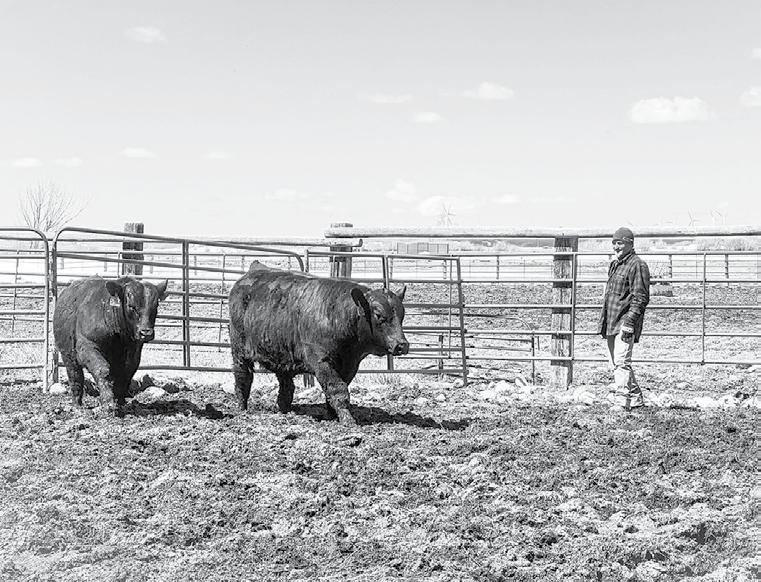
cow weight EPD, if available, and pay close attention to female fertility. Spangler notes EPDs representing sustained cow fertility – such as stayability or functional longevity – represent the ability for a cow to remain productive in the herd.
Spangler says produc-
ers who use economic selection indexes should focus on ones that fit their breeding objectives instead of using terminal indexes if they intend to retain replacement females.
“Know or ask what certain EPD and indexes mean and what breed average is,”
he concludes. “Do not buy a bull assuming he excels for a trait, only to later discover he ranks toward the bottom of the breed.”
Hannah Bugas is the managing editor of the Wyoming Livestock Roundup. Send comments on this article to roundup@wylr.net.
Estrus is a crucial indicator of whether a cow or heifer will successfully conceive. However, estrus cycles can vary significantly among individual females within a herd.
According to an October 2024 Bovine Veterinarian article, monitoring estrus intensity in cattle helps optimize reproduction and can be done efficiently with visual estrus detection aids.
University of British Columbia Animal Reproduction Professor Dr. Ronaldo Cerri is carrying out research to improve cattle fertility by identifying which cows and heifers are the best candidates to breed using tactics like artificial insemination (AI) and embryo transfer (ET), with estrus intensity as the deciding factor.
“Some cows will display estrus with less intensity for a shorter duration. They won’t walk around or be ridden as much,” says Cerri. “A cow in high estrus intensity typically has longer estrus and very intense physical activity which can be monitored.”
Cattle typically exhibit baseline activity when not in estrus, and when they start to enter estrus, their activity rises as the intensity of estrus increases.
He notes being able
to identify when estrus is about to peak is crucial for a successful pregnancy.
Breeding decisions
By analyzing extensive data from estrus detection sensors, Cerri and other researchers have identified patterns related to events occurring during estrus.
“The patterns are very consistent in many of the studies we do,” Cerri states. “Cows with lower estrus intensity always display less physical activity, but they also have lower pregnancy rates. On the flip side, cows with high estrus intensity display more activity and have higher pregnancy rates.”
Research conducted in the U.S., Canada, Brazil and Germany determined the same trend.
Cows with low estrus intensity often have lower progesterone levels during the growth of the ovulatory follicle, which increases their chances of failing to ovulate compared to those with high estrus intensity.
Understanding and managing a cow’s estrous cycle is crucial for successful cattle breeding, as it allows for precise timing of AI during the period when a cow is most fertile, leading to significantly higher pregnancy rates and improved reproductive efficiency.
Similarly, ET recipients exhibiting high estrus intensity have more consistent pregnancy results.
He adds, “Estrus intensity serves as a quality marker for a good cycle which leads to a better pregnancy via AI and ET.”
Estrus intensity
Assessing the intensity of estrus using heat detection tools allows producers to identify the best candidates for breeding at any given time.
Utilizing a mass breeding protocol, producers can also leverage estrus intensity to guide their selection of genetics.
“The more targeted a producer wants their breeding program to be, the more they can use estrus intensity information to make a breeding decision,” Cerri states. “Producers can identify high estrus intensity cows to receive sexed semen or ET because they are more likely to get pregnant and can use conventional semen for the low estrus intensity females.”
Cerri continues, “Producers can monitor estrus intensity by watching movement and mounting activity, but it really isn’t practical. This is why we need to utilize tools to helps us identify these events.”

There are various tools available for monitoring estrus, including activity monitors, tail paint or chalk and breeding indicator patches. However, some tools provide more information than others and come with certain trade-offs.
“Activity monitors are quite effective at measuring estrus intensity, but not everyone can utilize them,” Cerri states. “Breeding indicator patches are another option that can give producers a subjective measure and score estrus intensity, which is proba-
bly better than other inexpensive options like tail chalk.”
According to research, by using breeding indicator patches, producers can monitor estrus by checking for patches with 50 percent or more of the surface ink rubbed off.
This indicates the female is in high estrus intensity and ready to breed. Conversely, if less than 50 percent of the ink is rubbed off, the female is at low estrus intensity.
In this case, a producer might consider breeding her with lower-cost genet-
ics or waiting to breed until she has reached high estrus intensity.
“Estrus and the intensity of estrus within cows are important pieces of information to add to a reproduction program,” Cerri concludes. “Once a producer has this information, they’ll have better predictions of what their cows will do, making them more efficient and profitable.”
Melissa Anderson is the editor of the Wyoming Livestock Roundup. Send comments on this article to roundup@wylr.net.
